Zvenigorod is a small Russian city located 45 kilometers west of Moscow on the Moskva River. According to the last census in 2010, the town had a population of just 16,395, which makes it astronomically tiny by Russian standards.
The city is best known for the Savvino-Storozhevsky Monastery located on top of a hill overlooking the Moskva River. The city also hosted the famous Russian short story writer and playwright Anton Chekhov after he graduated university in Moscow in the late 19th century. There are stories that Chekhov was such a rowdy character that he got in trouble with the local police who repeatedly fined him for the lavish, drunk parties he threw in the village.
The easiest way to get to Zvenigorod is to take an elektrichka from Moscow’s Belorusskaya Railway Station. The ticket costs 154 rubles, or around $3, and takes an hour and 25 minutes to get there.
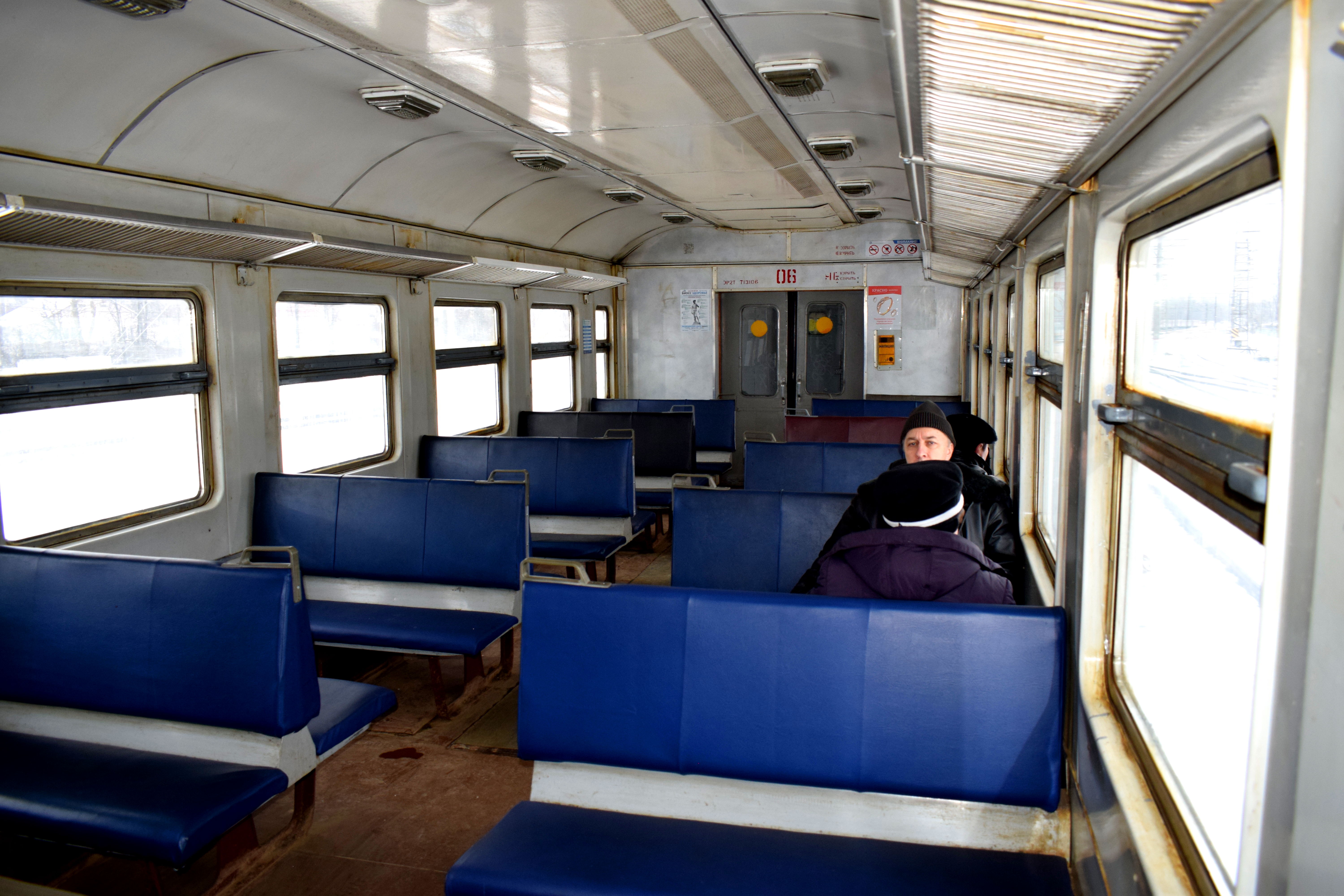 Getting off at Zvenigorod station. It was a cold, cloudy and snowy day in early March when we visited.
Getting off at Zvenigorod station. It was a cold, cloudy and snowy day in early March when we visited.
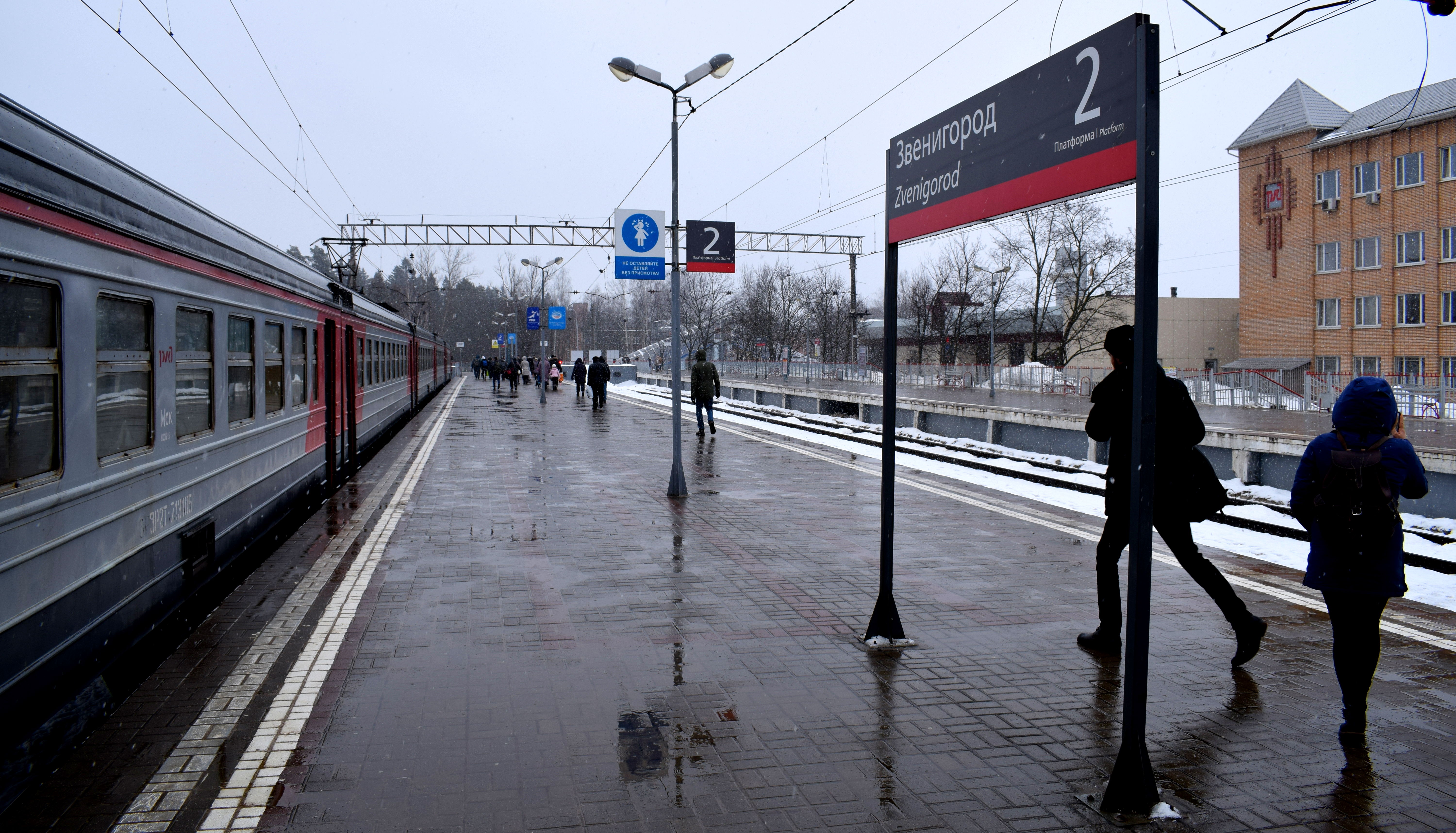 Zvenigorod was first mentioned in historical records in the late 1300’s. The city’s main tourist attraction is the Savvino-Storozhevsky Monastery, located about 1.5 kilometers from the city center. It was founded in 1398 by Savva Storozhevsky and is one of the few remaining artifacts of 14th century Muscovite Russia architecture.
Zvenigorod was first mentioned in historical records in the late 1300’s. The city’s main tourist attraction is the Savvino-Storozhevsky Monastery, located about 1.5 kilometers from the city center. It was founded in 1398 by Savva Storozhevsky and is one of the few remaining artifacts of 14th century Muscovite Russia architecture.
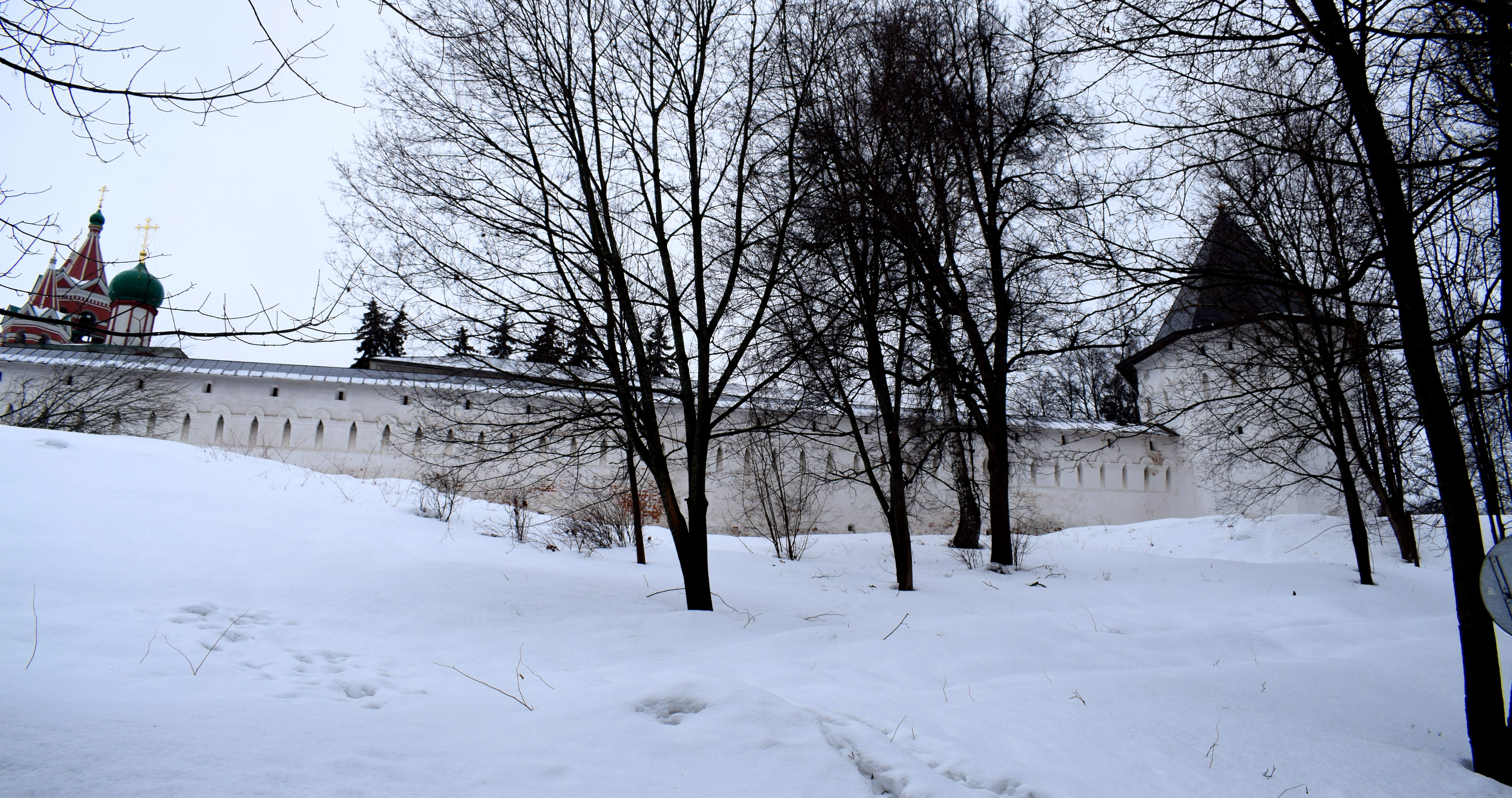 Part of what makes the monastery so special is that it is essentially hidden in a forest, with trees surrounding the monastery from all sides. During the summer and fall when the trees are filled with leaves the monastery is barely visible.
Part of what makes the monastery so special is that it is essentially hidden in a forest, with trees surrounding the monastery from all sides. During the summer and fall when the trees are filled with leaves the monastery is barely visible.
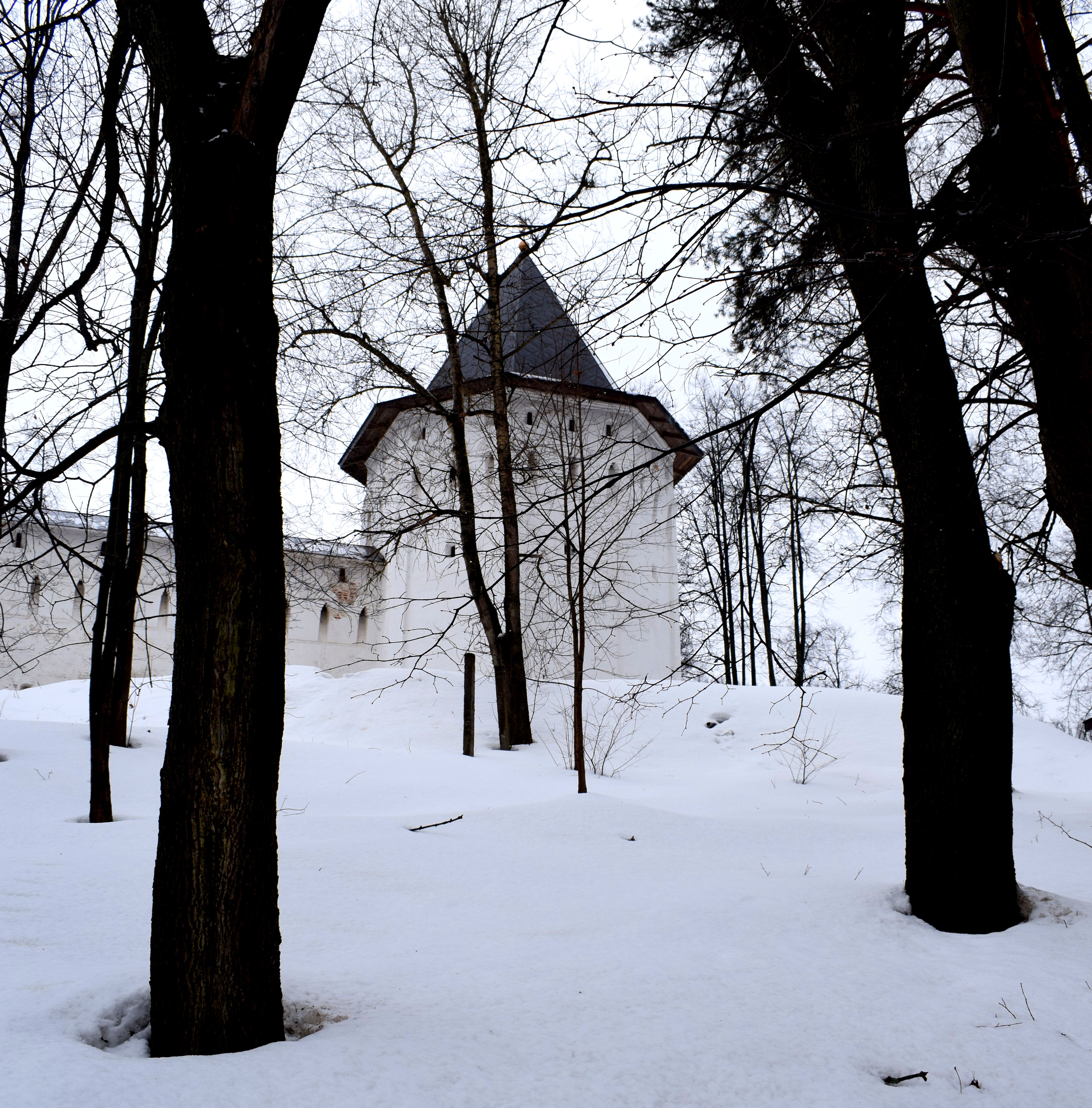 There are also several estates and old homes sprinkled around the woods.
There are also several estates and old homes sprinkled around the woods.
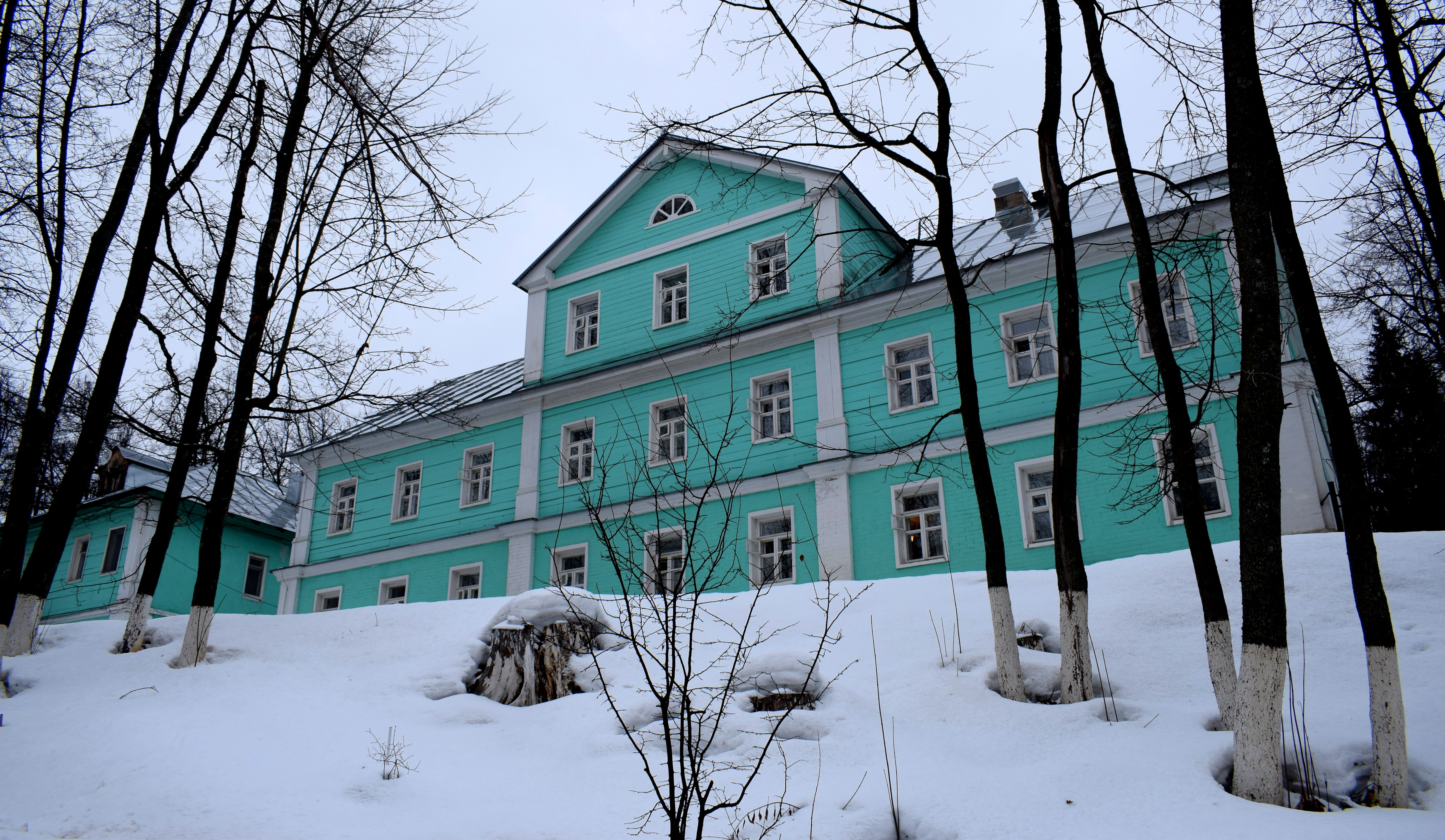 Over the centuries the Savvino-Storozhevsky Monastery survived several episodes where it could have been completely destroyed. During the Polish invasion of Russia in the early 17th century the Poles captured the area on their way to Moscow. Two hundred years later the French would do the same under Napoleon in 1812.
Over the centuries the Savvino-Storozhevsky Monastery survived several episodes where it could have been completely destroyed. During the Polish invasion of Russia in the early 17th century the Poles captured the area on their way to Moscow. Two hundred years later the French would do the same under Napoleon in 1812.
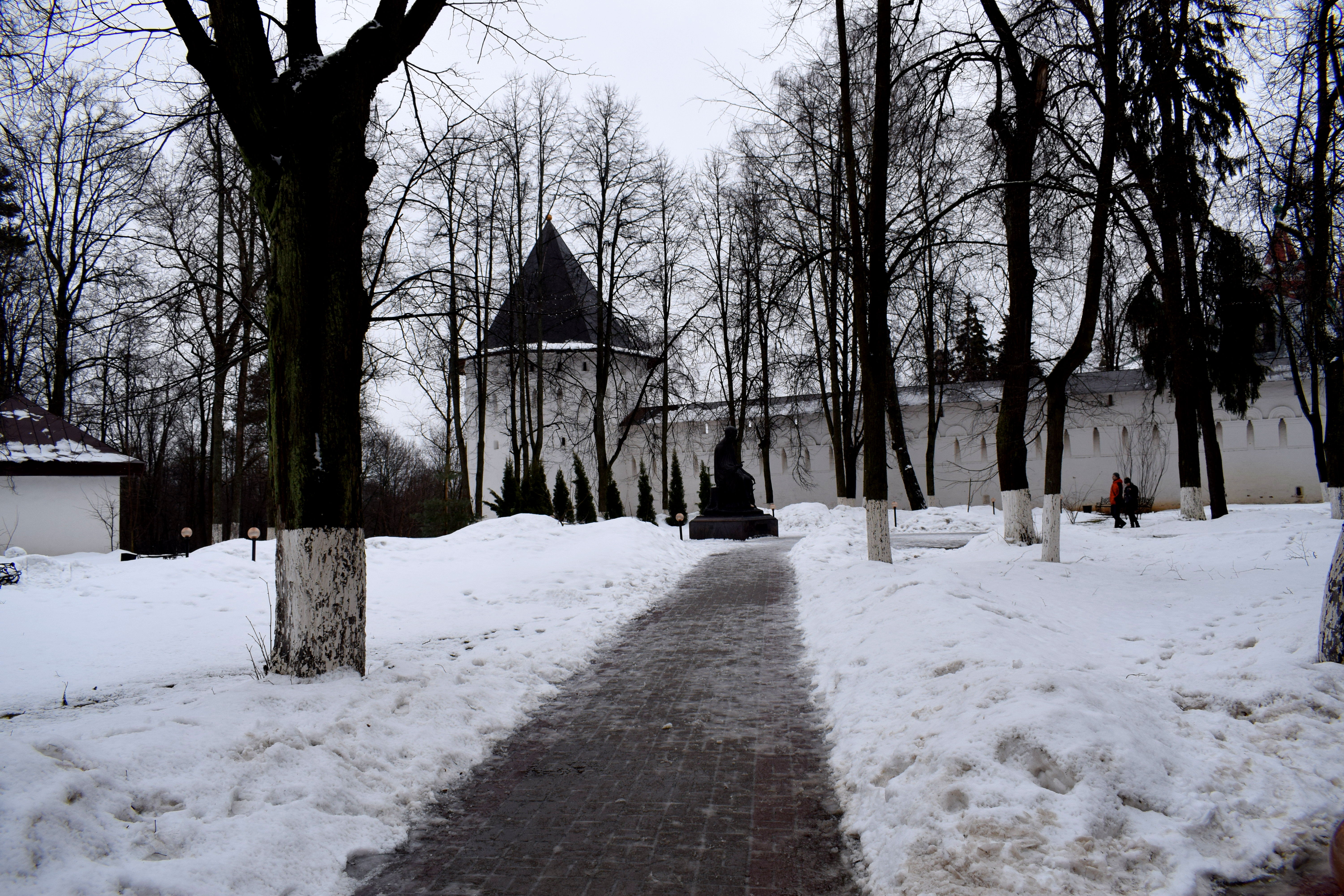 The biggest threat to the monastery however came when the Bolsheviks took power in Russia following the Russian civil war in 1922. They declared an end to the old tsarist order and called for the destruction of private property and religion across Russia. As such, the regime’s biggest enemies became wealthy landowners, peasants and the church. In the 1930’s Stalin began demolishing churches across all of Russia. In 1936 there were plans to raze the monastery entirely and build a stadium in its place. Thankfully it was spared after prominent cultural figures lobbied for its rescue.
The biggest threat to the monastery however came when the Bolsheviks took power in Russia following the Russian civil war in 1922. They declared an end to the old tsarist order and called for the destruction of private property and religion across Russia. As such, the regime’s biggest enemies became wealthy landowners, peasants and the church. In the 1930’s Stalin began demolishing churches across all of Russia. In 1936 there were plans to raze the monastery entirely and build a stadium in its place. Thankfully it was spared after prominent cultural figures lobbied for its rescue.
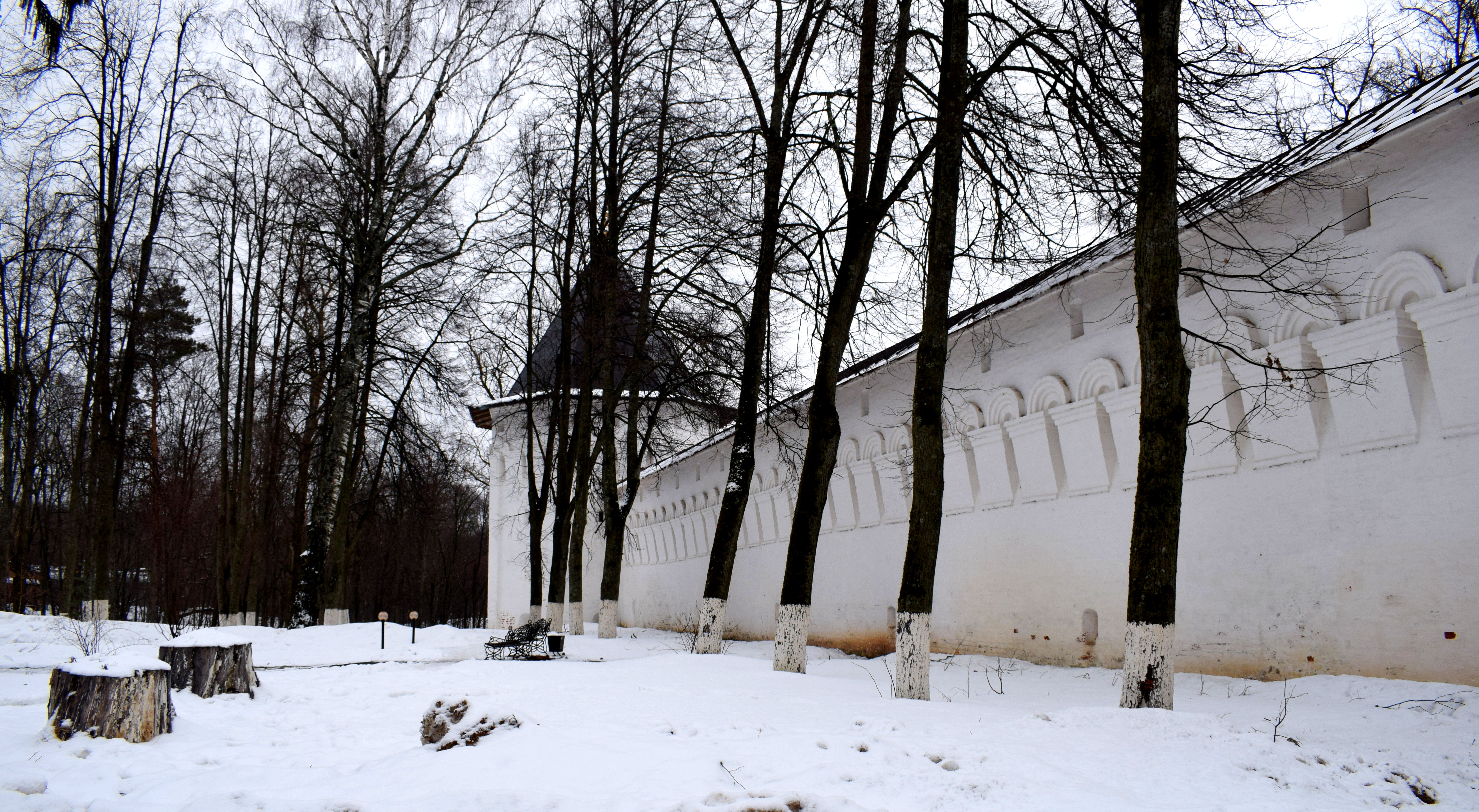 Part of what makes the monastery so attractive is its location on top of a hill overlooking the Moskva River. The view is even prettier in the summer and fall when the river is visible.
Part of what makes the monastery so attractive is its location on top of a hill overlooking the Moskva River. The view is even prettier in the summer and fall when the river is visible.
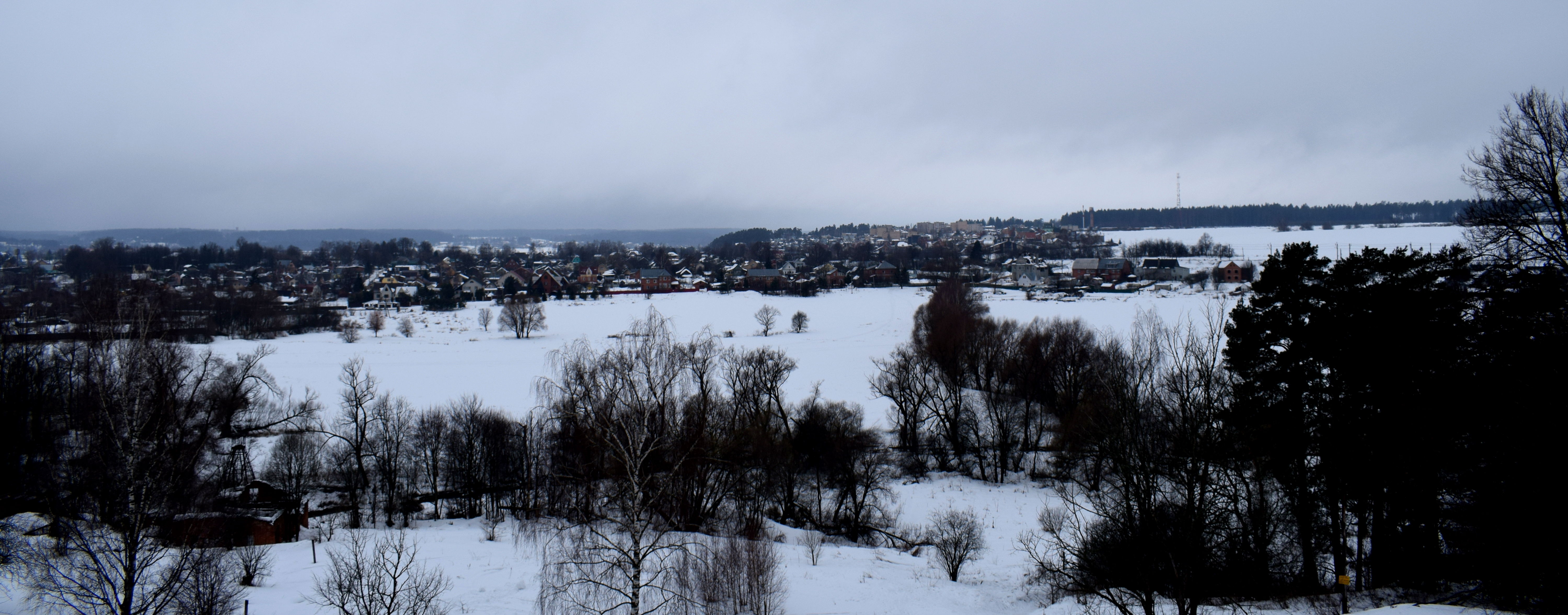 Historically the monastery had a total of seven bell towers, but only six have survived.
Historically the monastery had a total of seven bell towers, but only six have survived.
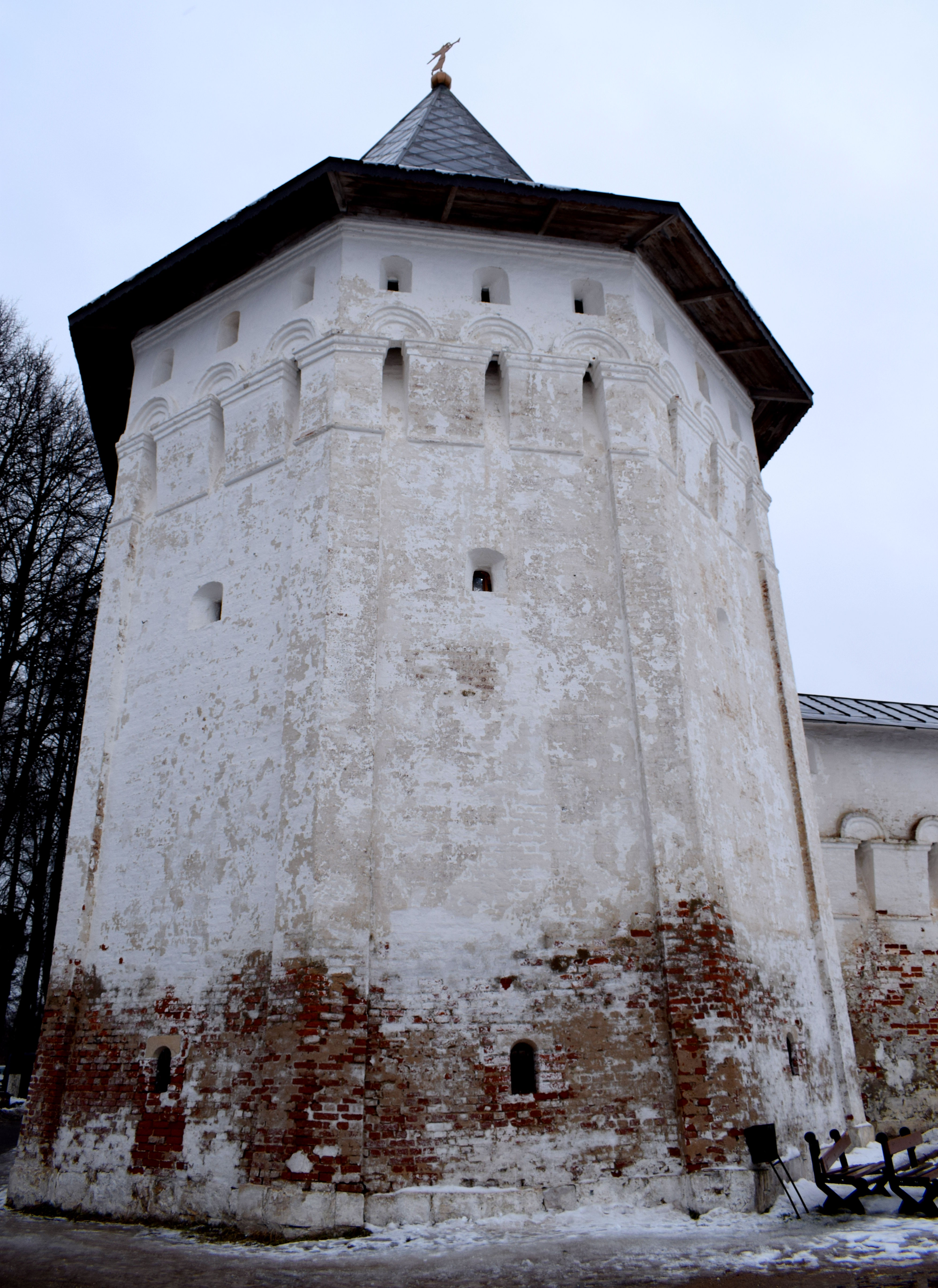 A final threat to the monastery arose during the German invasion of the Soviet Union in WWII. The German army reached the outskirts of Moscow but never captured the city. Although Moscow was bombed by the Germans and hundreds of other cities to the west of Moscow were destroyed, Zvenigorod was skipped over. Many Russian cities that lie west of Moscow were significantly damaged during WWII, with some seeing more than 70% of their historic centers destroyed, such as Voronezh and Belgorod. Zvenigorod managed to escape this fate.
A final threat to the monastery arose during the German invasion of the Soviet Union in WWII. The German army reached the outskirts of Moscow but never captured the city. Although Moscow was bombed by the Germans and hundreds of other cities to the west of Moscow were destroyed, Zvenigorod was skipped over. Many Russian cities that lie west of Moscow were significantly damaged during WWII, with some seeing more than 70% of their historic centers destroyed, such as Voronezh and Belgorod. Zvenigorod managed to escape this fate.
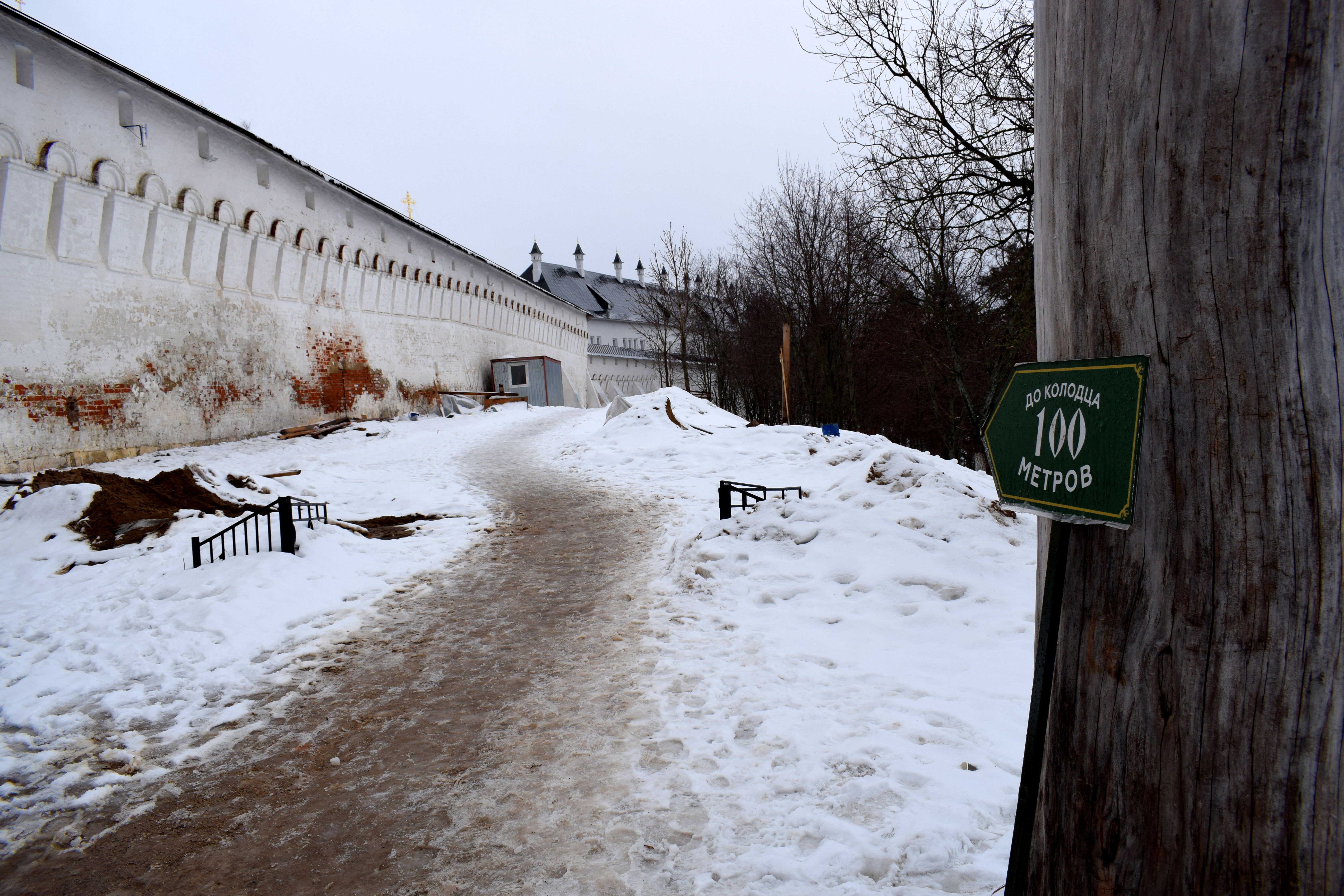 The entrance to the monastery.
The entrance to the monastery.
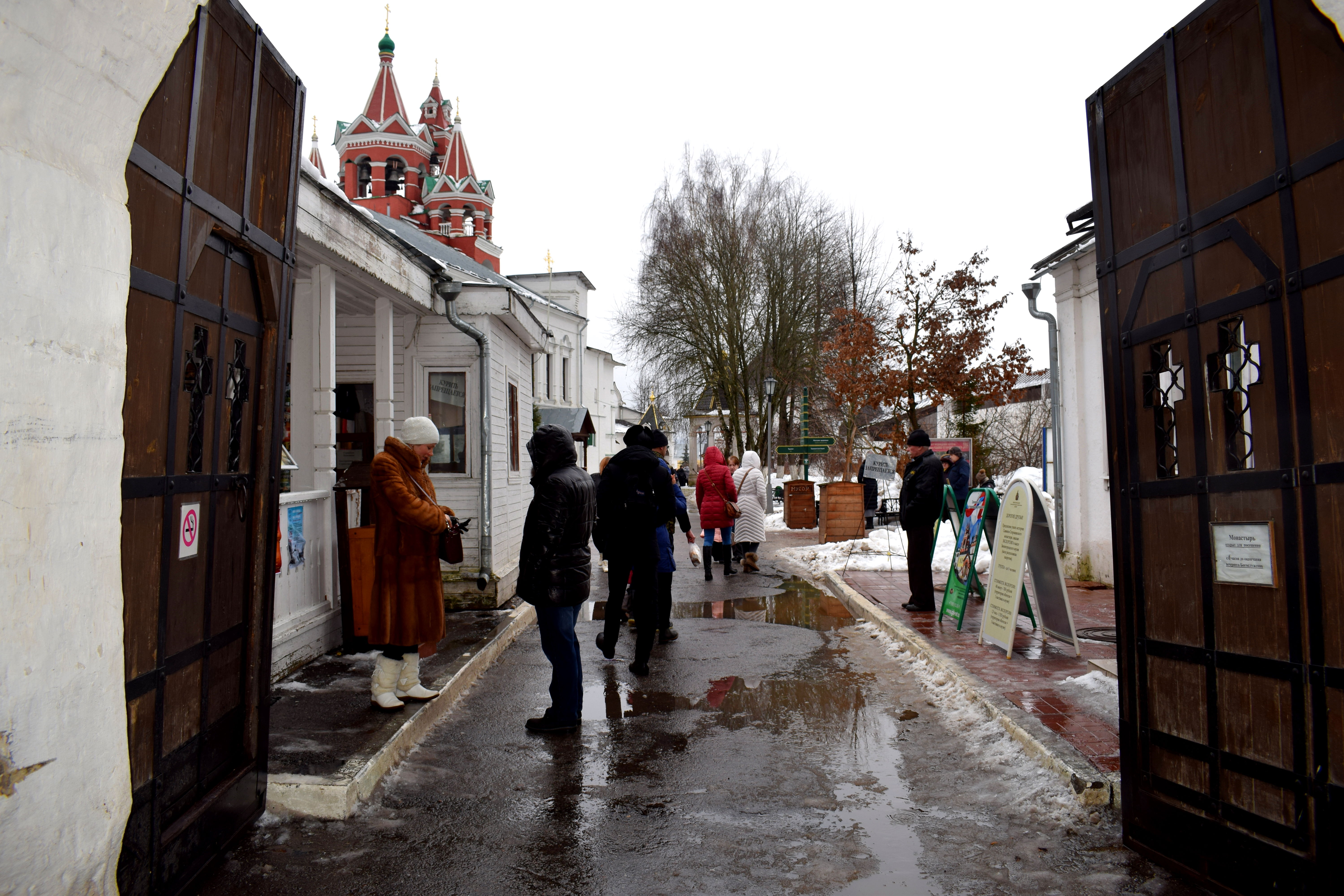 The monastery gets a steady stream of tourists from Moscow and Russia year round. Even in the dead of winter there were tons of visitors.
The monastery gets a steady stream of tourists from Moscow and Russia year round. Even in the dead of winter there were tons of visitors.
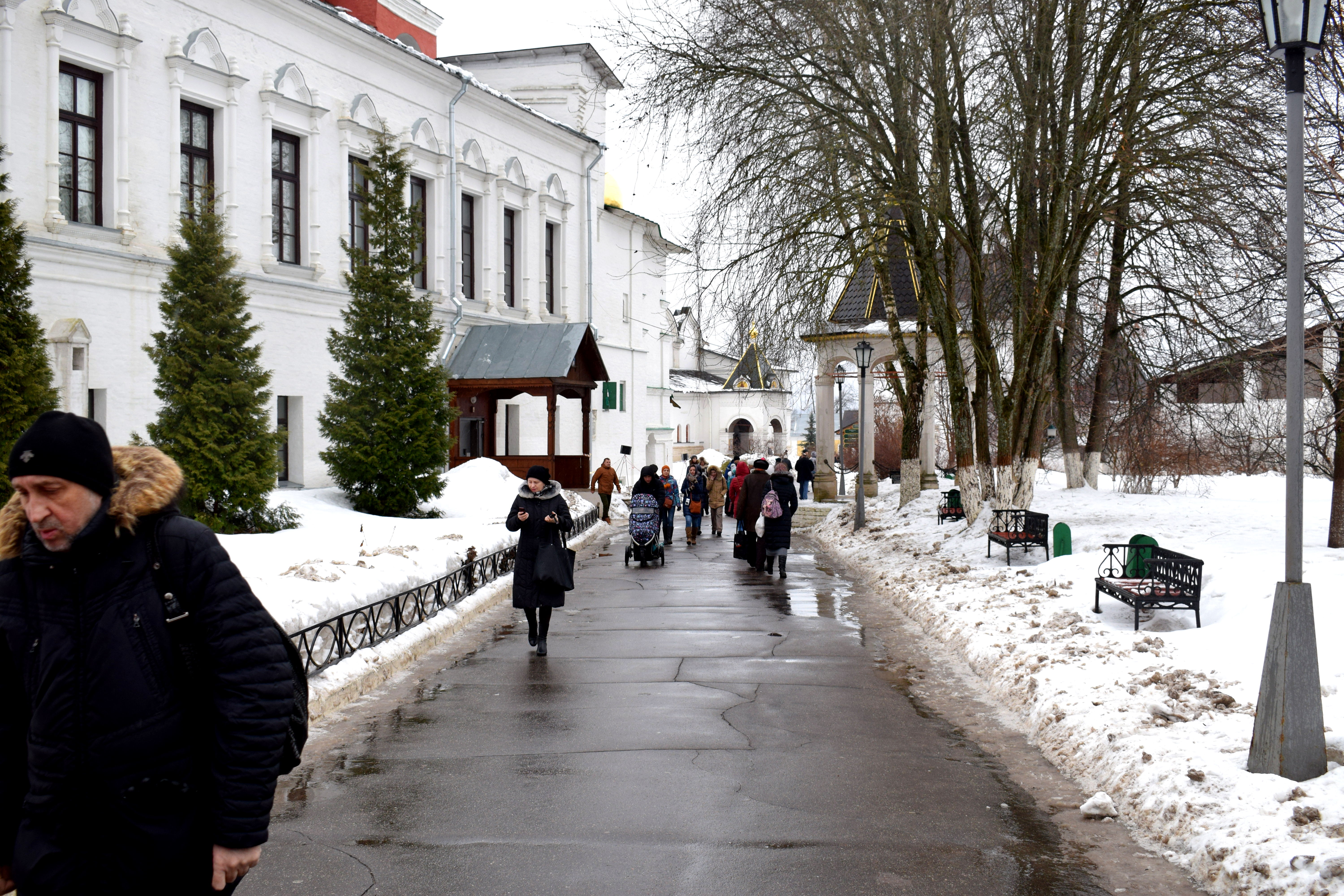 One reason people visit is because the monastery is known to make some of the best bread, pastries and cakes in the region. People often commute all the way from Moscow to buy the deserts baked by the monastery’s monks and to then sit and chat in the cafe above drinking tea.
One reason people visit is because the monastery is known to make some of the best bread, pastries and cakes in the region. People often commute all the way from Moscow to buy the deserts baked by the monastery’s monks and to then sit and chat in the cafe above drinking tea.
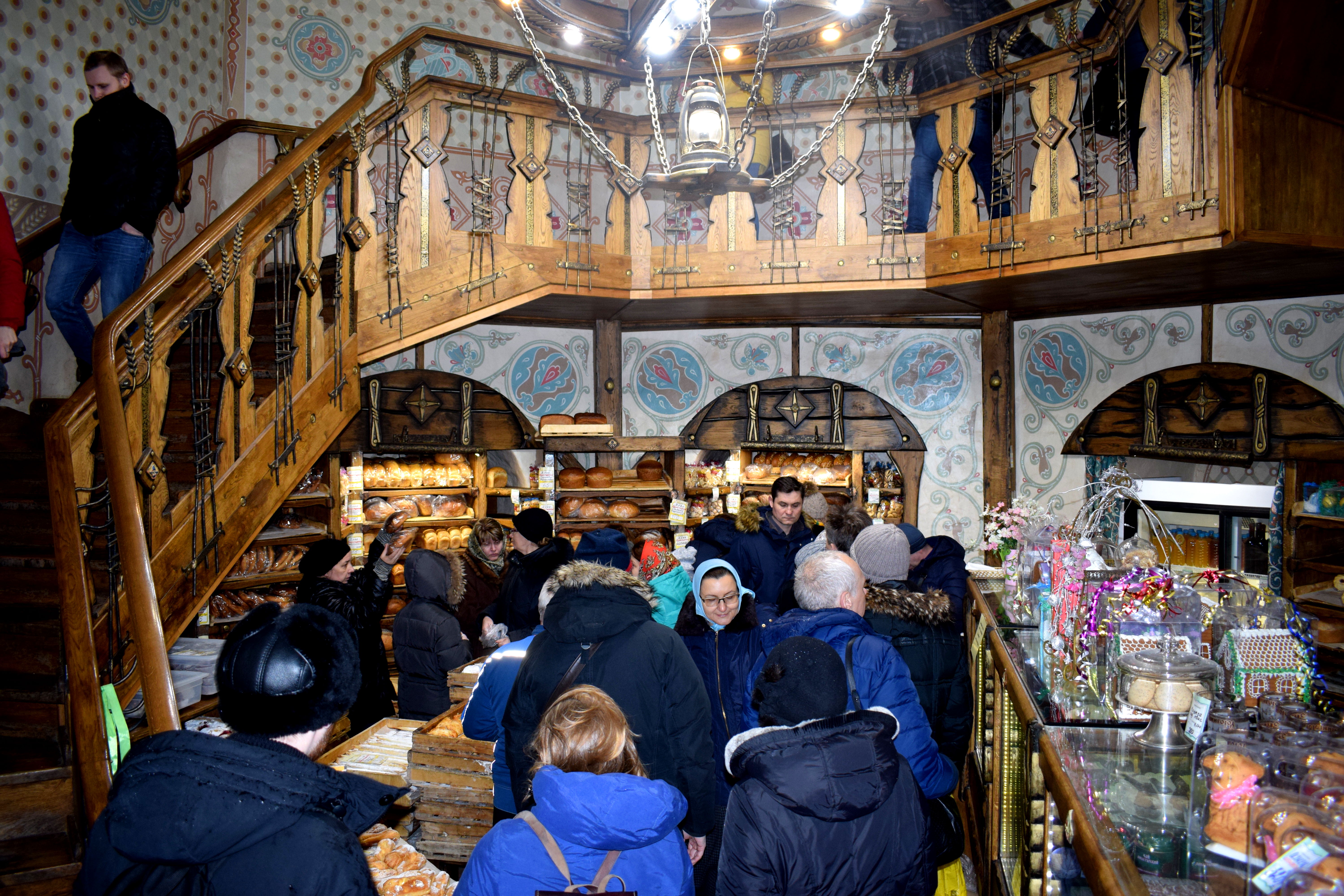
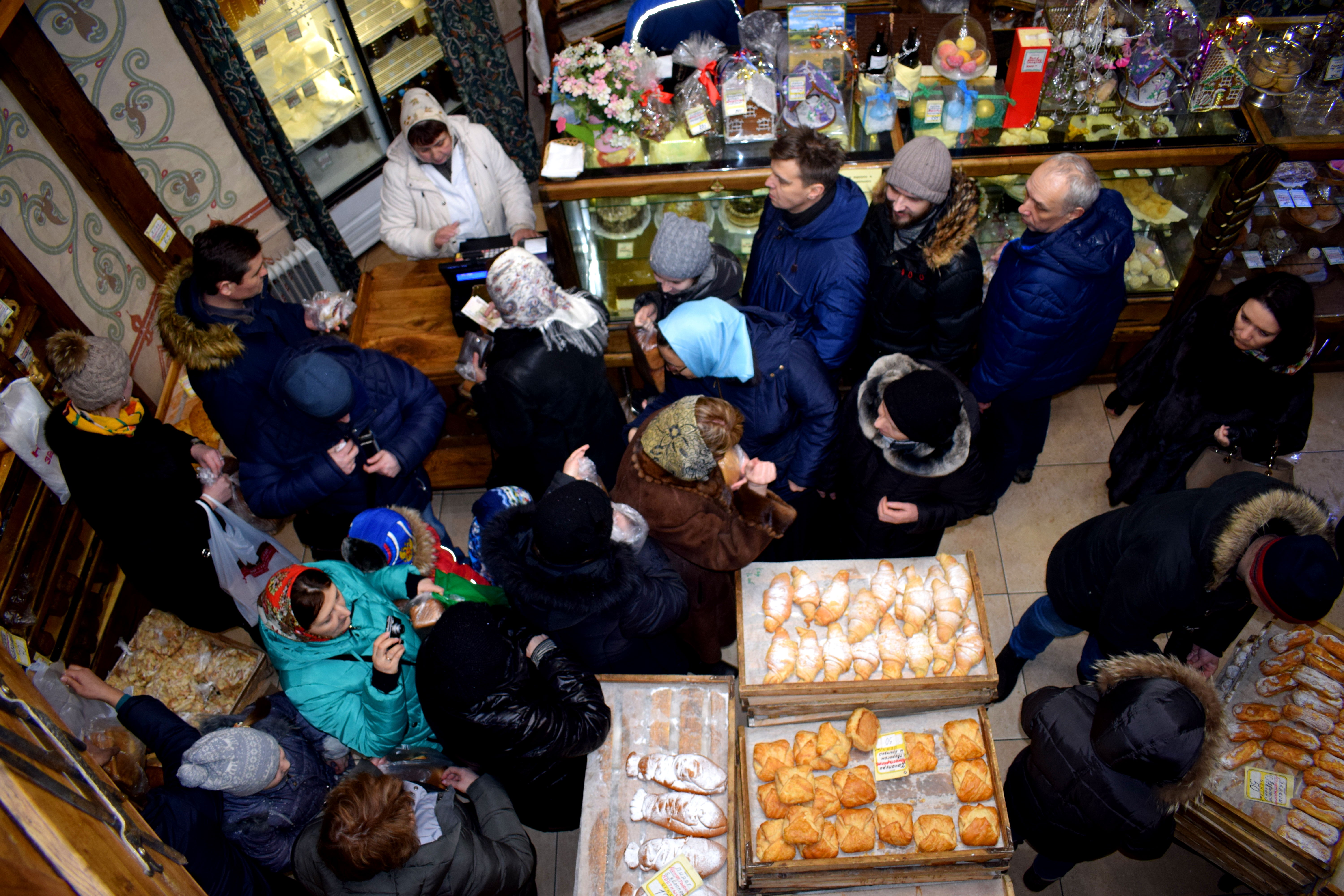
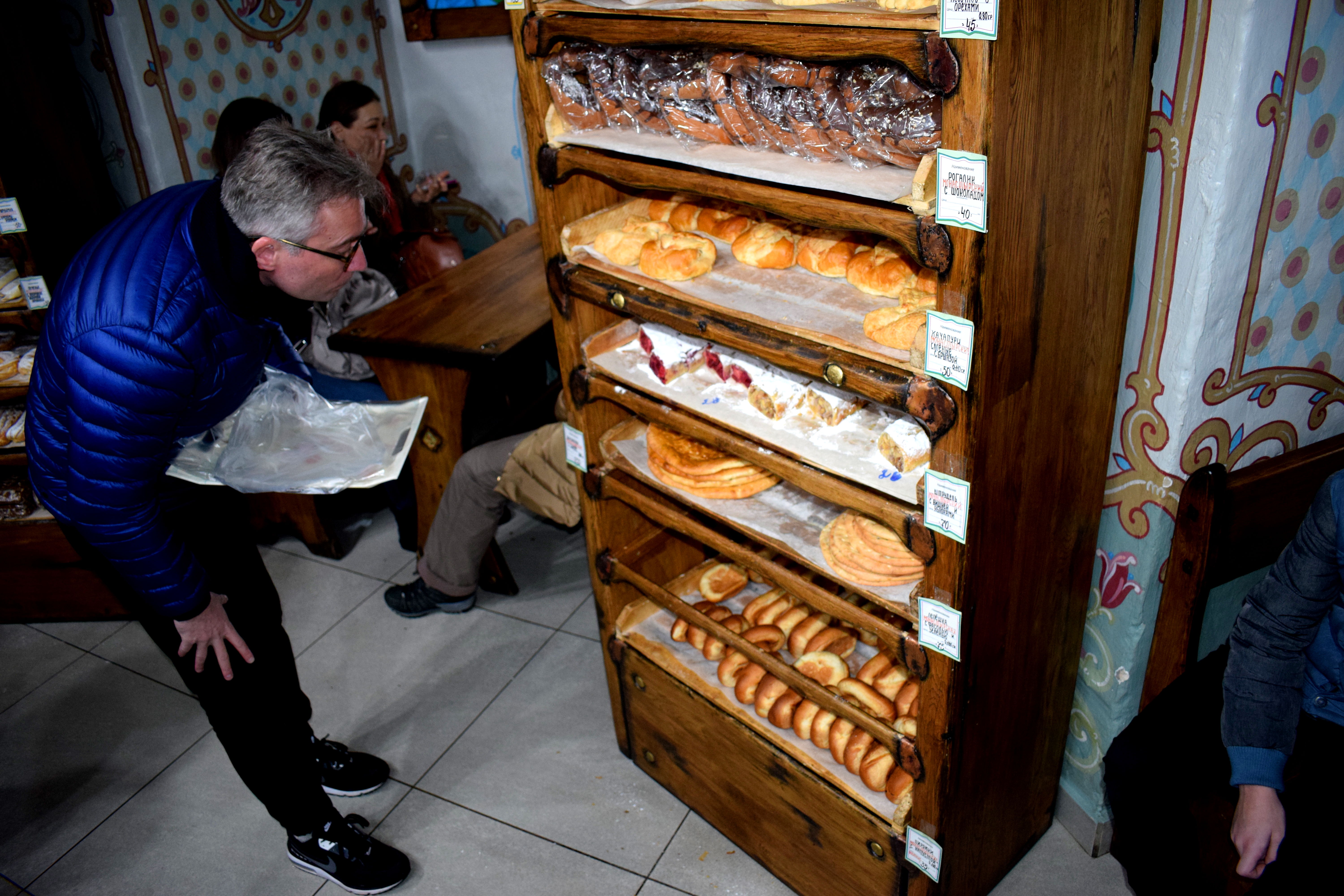 The interior of the cafe retains the same old wooden architecture that was there a hundred years ago.
The interior of the cafe retains the same old wooden architecture that was there a hundred years ago.
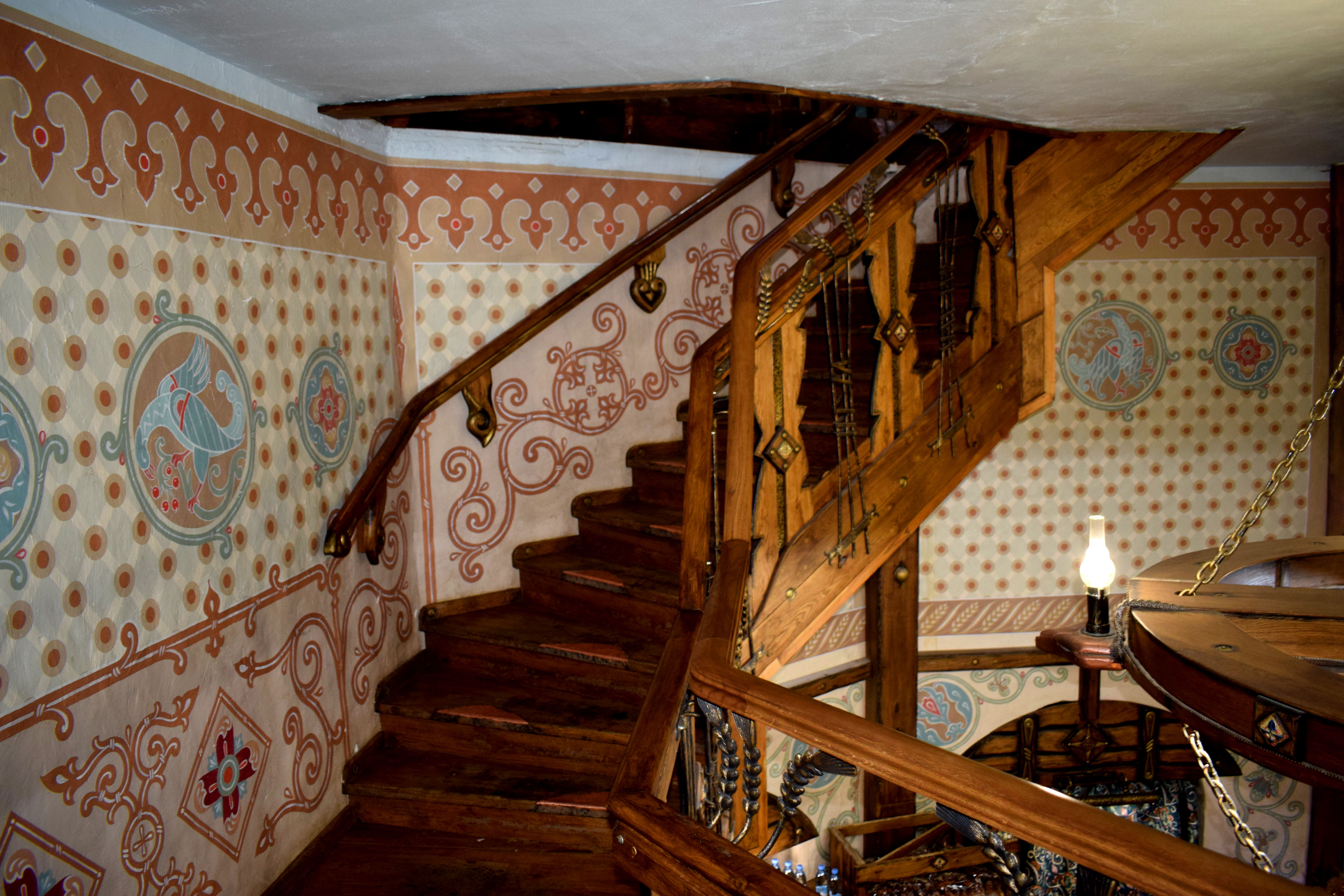 After leaving the cafe, visitors are free to roam around the walls of the monastery and take in the beautiful views.
After leaving the cafe, visitors are free to roam around the walls of the monastery and take in the beautiful views.
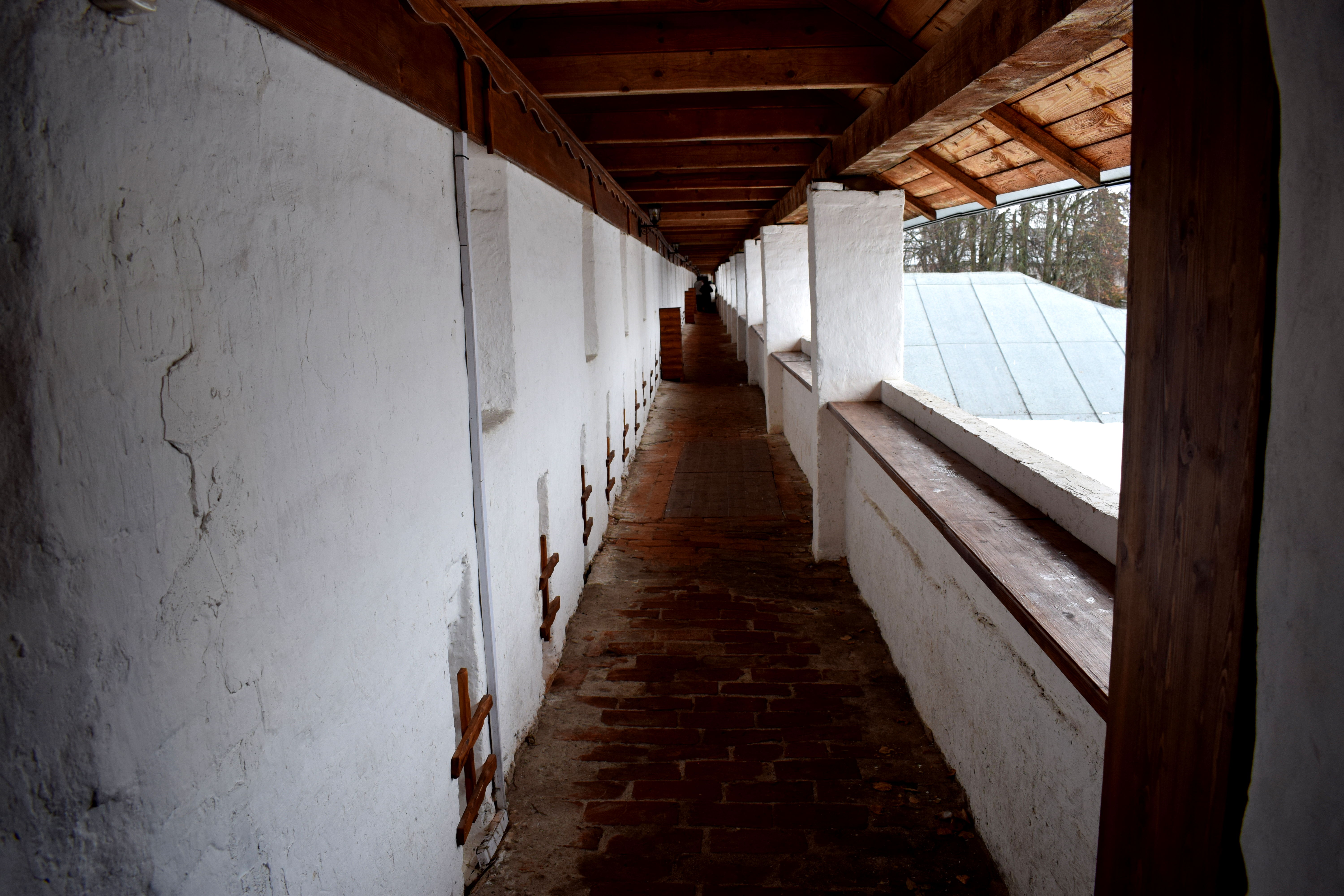
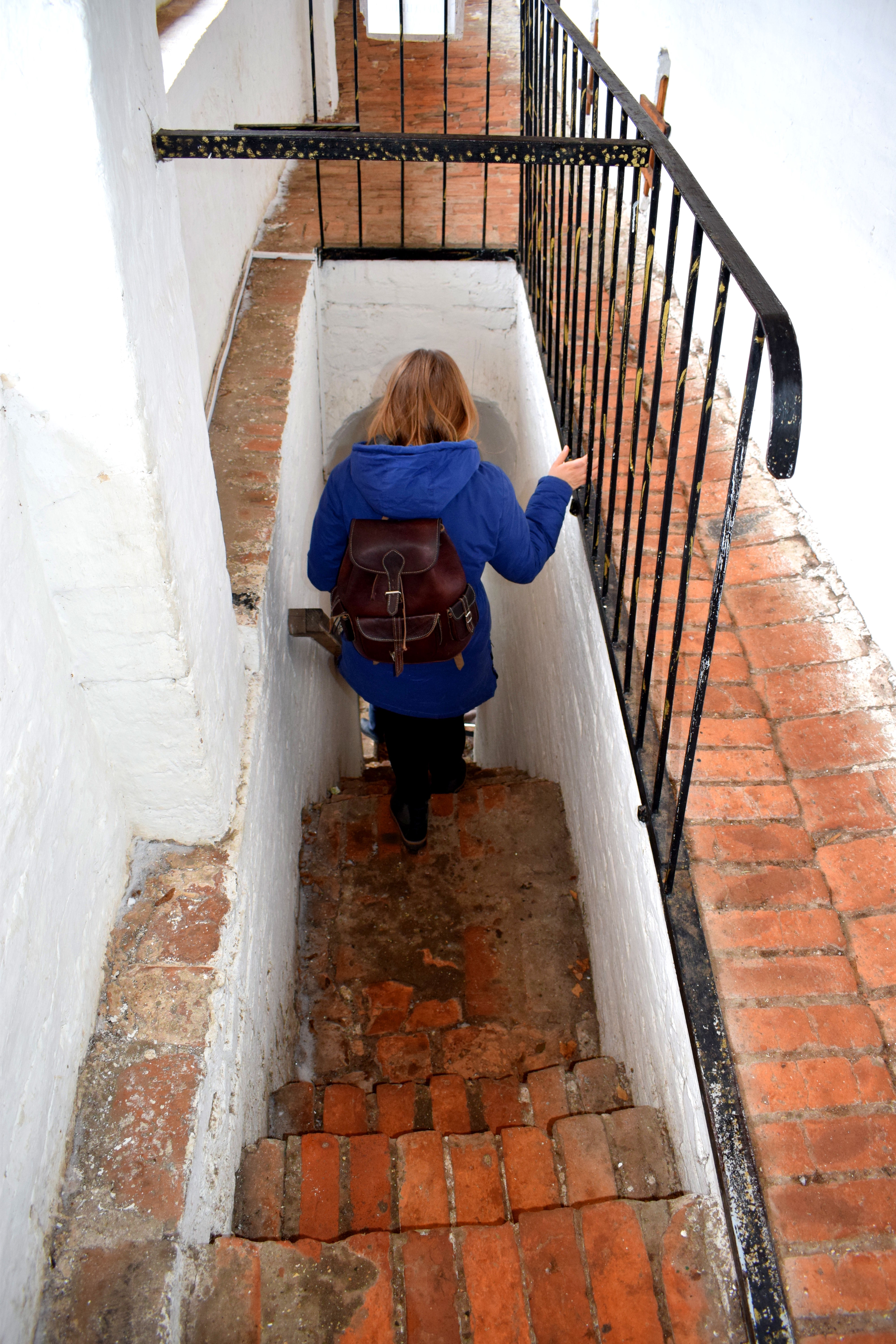
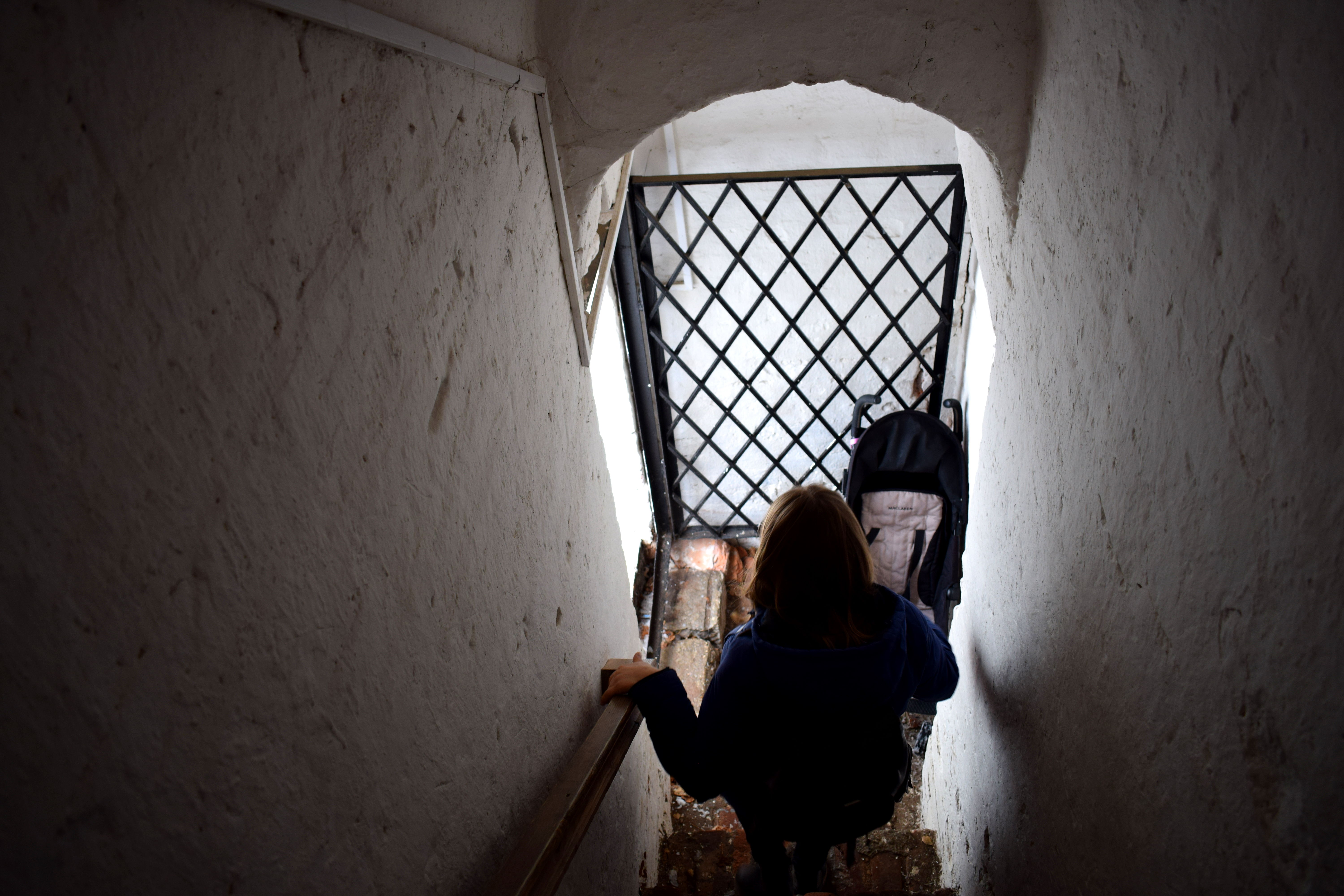 The central area of the monastery. When the Bolsheviks captured the monastery in 1918 they pillaged the frescoes and artifacts in the buildings, including the tomb of the monastery’s founder, St. Savva. It was shut down in 1919 and remained in an abysmal state for the remainder of the 20th century until the mid 1980’s when restoration efforts began.
The central area of the monastery. When the Bolsheviks captured the monastery in 1918 they pillaged the frescoes and artifacts in the buildings, including the tomb of the monastery’s founder, St. Savva. It was shut down in 1919 and remained in an abysmal state for the remainder of the 20th century until the mid 1980’s when restoration efforts began.
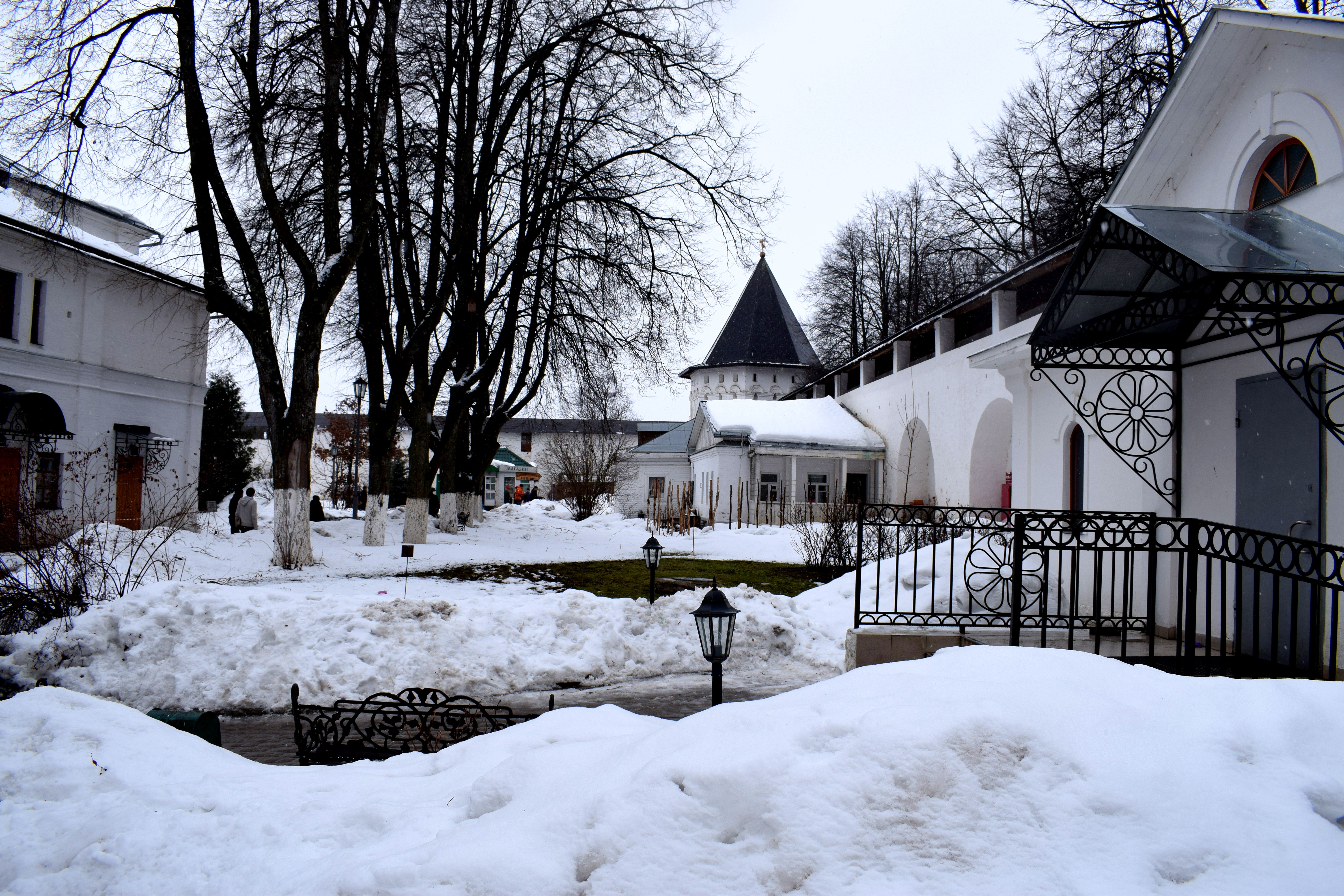 The Nativity of Mary Sobor, originally built in 1405. Further sections were added on in subsequent centuries.
The Nativity of Mary Sobor, originally built in 1405. Further sections were added on in subsequent centuries.
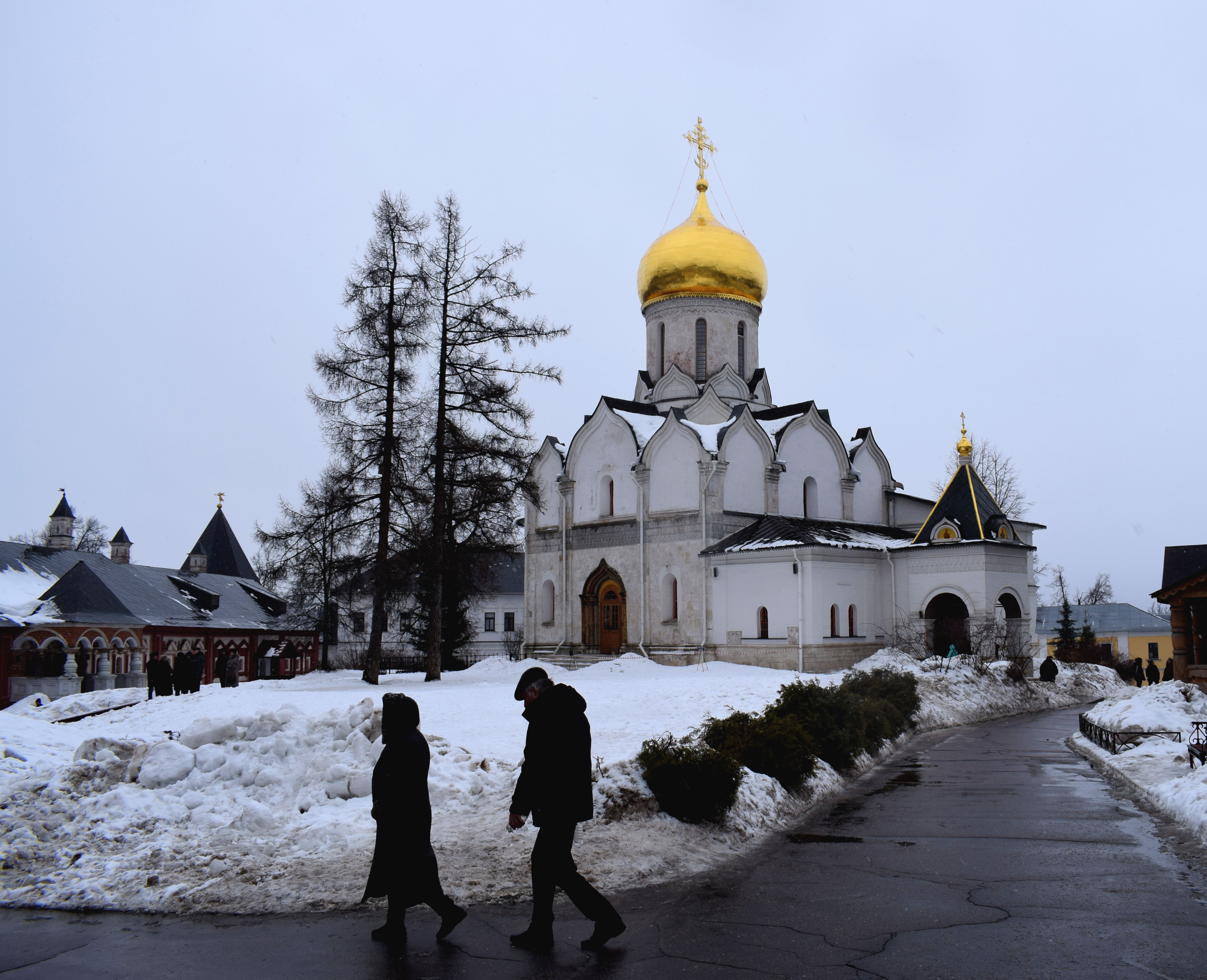
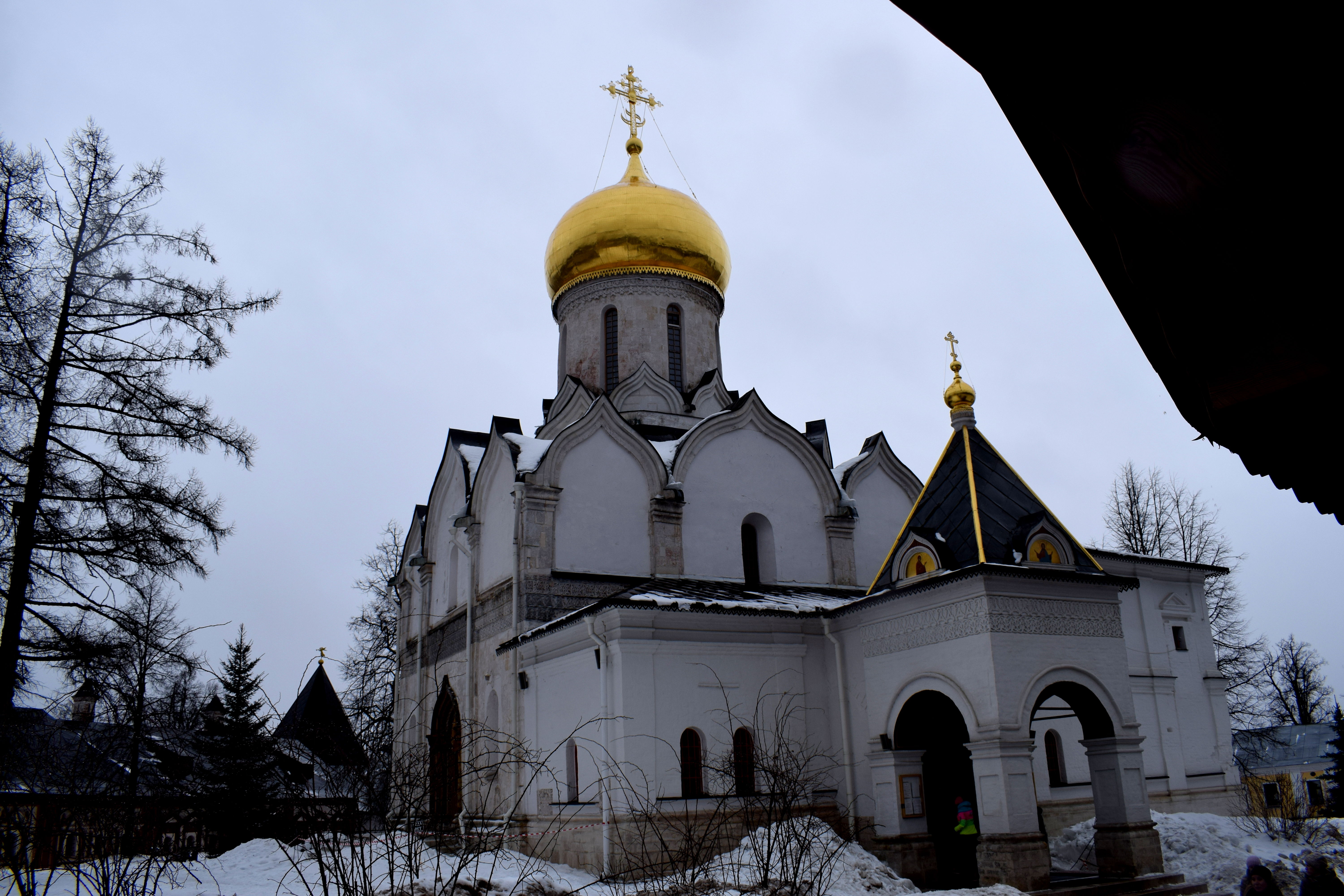 Zvenigorod began to decline in significance as a political and religious center following the 15th century. But in the mid 17th century the city experienced a revival in importance after the Russian Tsar Alexis decided set up his residence in the walls of the monastery.
Zvenigorod began to decline in significance as a political and religious center following the 15th century. But in the mid 17th century the city experienced a revival in importance after the Russian Tsar Alexis decided set up his residence in the walls of the monastery.
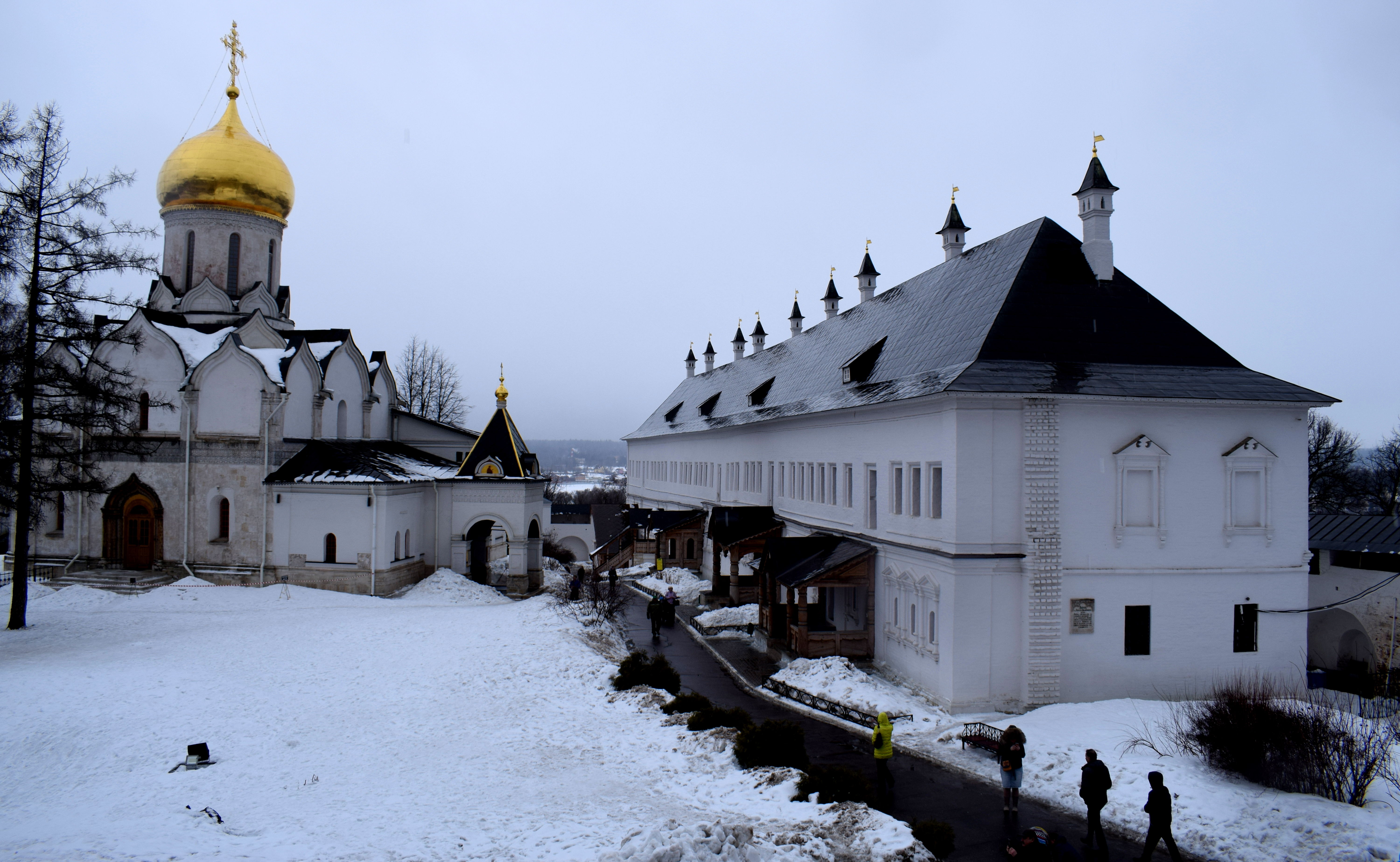 Tsar Alexis ruled Russia from 1645-1676. His reign oversaw wars with Poland and Sweden, the schism in the Russian Orthodox Church between Old Believers and church reforms initiated in 1653 to bring Russian Orthodox Church practices in line with Greek practices. He also ruled during a major Cossack revolt in southern Russia in 1670-1671. He spent most his time responding to these events in the walls of this monastery.
Tsar Alexis ruled Russia from 1645-1676. His reign oversaw wars with Poland and Sweden, the schism in the Russian Orthodox Church between Old Believers and church reforms initiated in 1653 to bring Russian Orthodox Church practices in line with Greek practices. He also ruled during a major Cossack revolt in southern Russia in 1670-1671. He spent most his time responding to these events in the walls of this monastery.
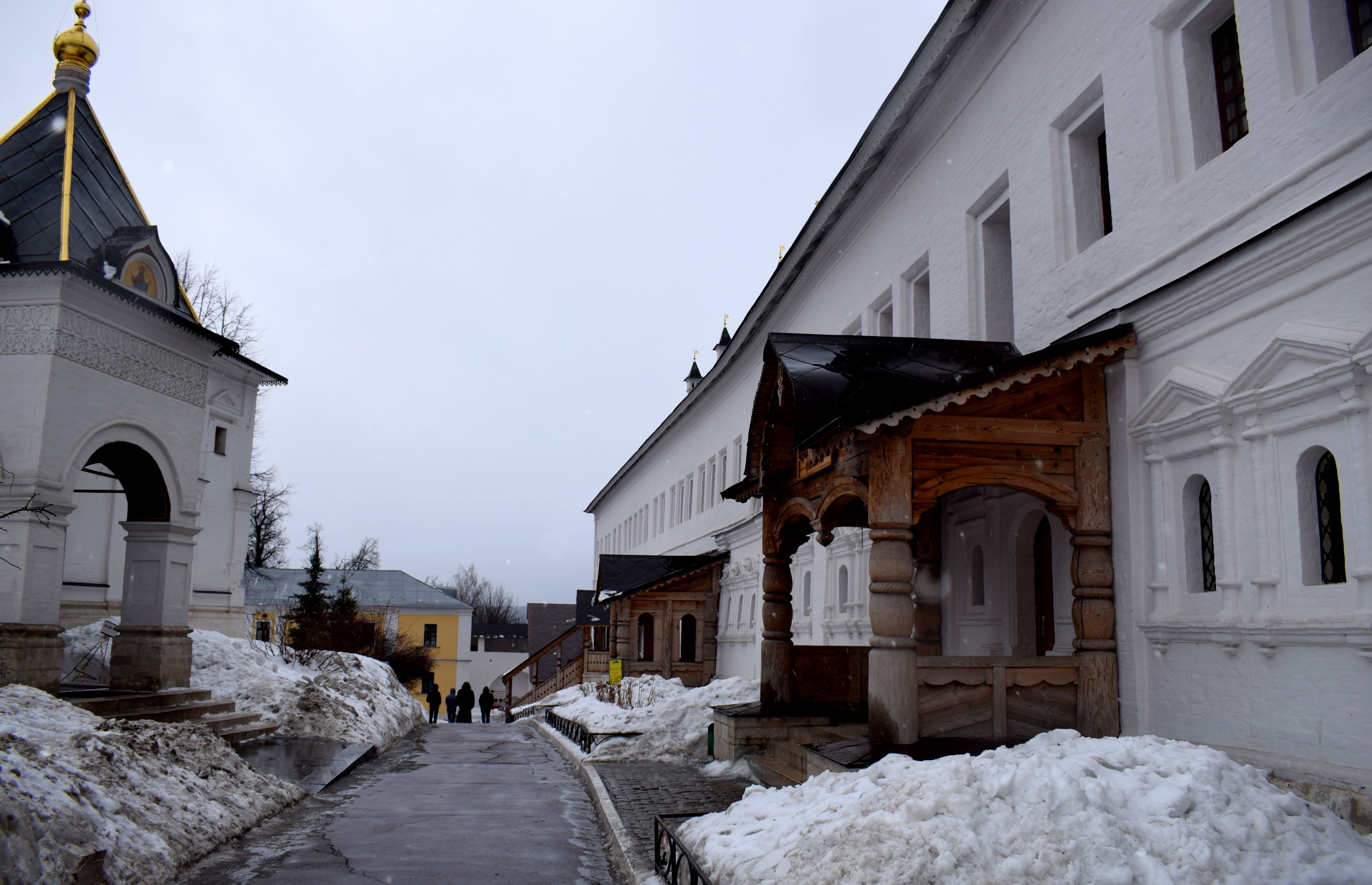
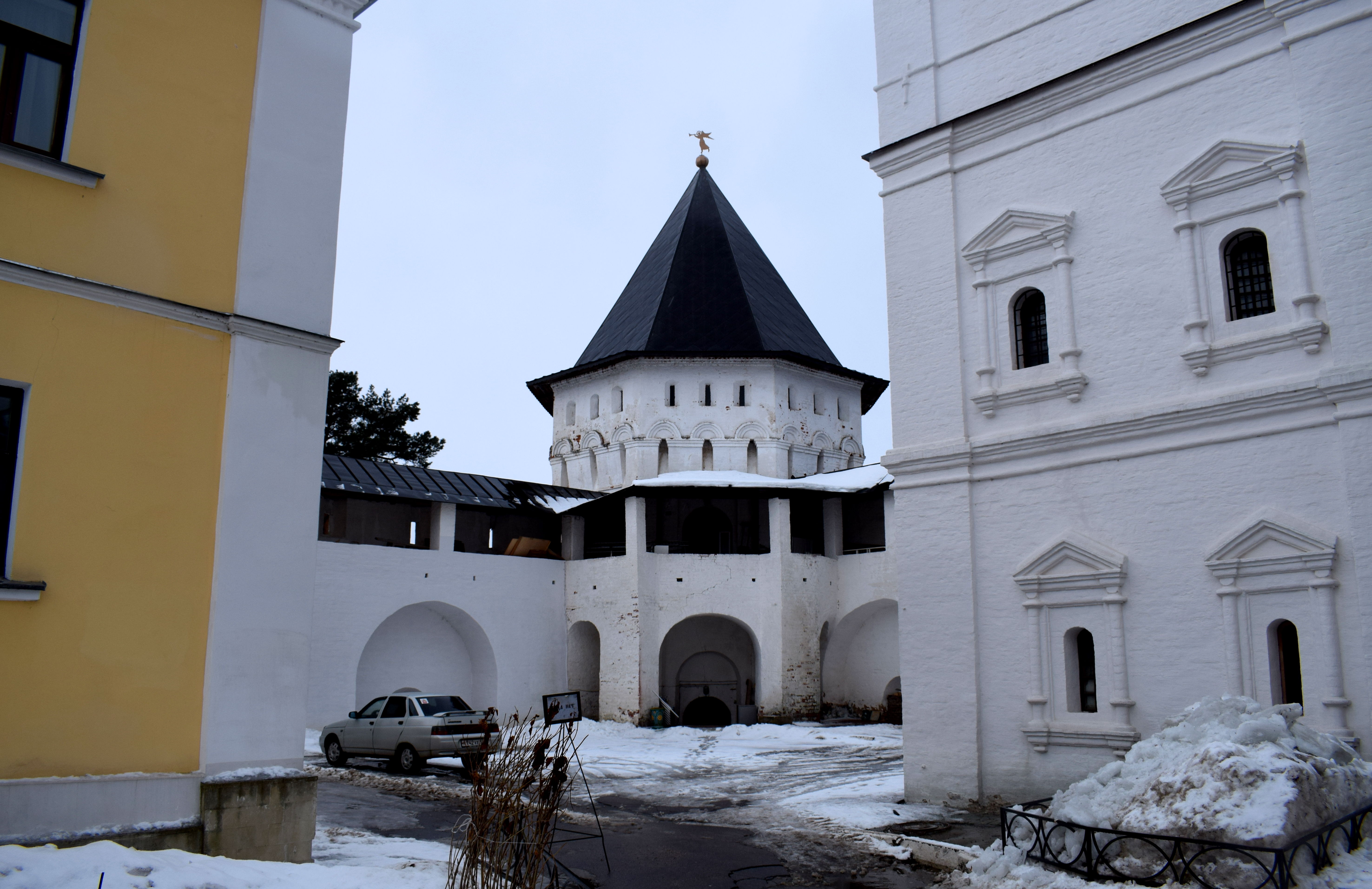 After Tsar Alexis died he was succeeded by his eldest son Feodor III who continued to use the monastery as his primary residence. Feodor III ruled Russia from 1676 to 1682 and assumed the throne when he was just 15 years old. He would rule Russia for only five years, dying in 1682 at the age of 20. After Feodor III’s death, the monastery declined in importance, especially when Peter the Great moved Russia’s capital to St. Petersburg in 1703.
After Tsar Alexis died he was succeeded by his eldest son Feodor III who continued to use the monastery as his primary residence. Feodor III ruled Russia from 1676 to 1682 and assumed the throne when he was just 15 years old. He would rule Russia for only five years, dying in 1682 at the age of 20. After Feodor III’s death, the monastery declined in importance, especially when Peter the Great moved Russia’s capital to St. Petersburg in 1703.
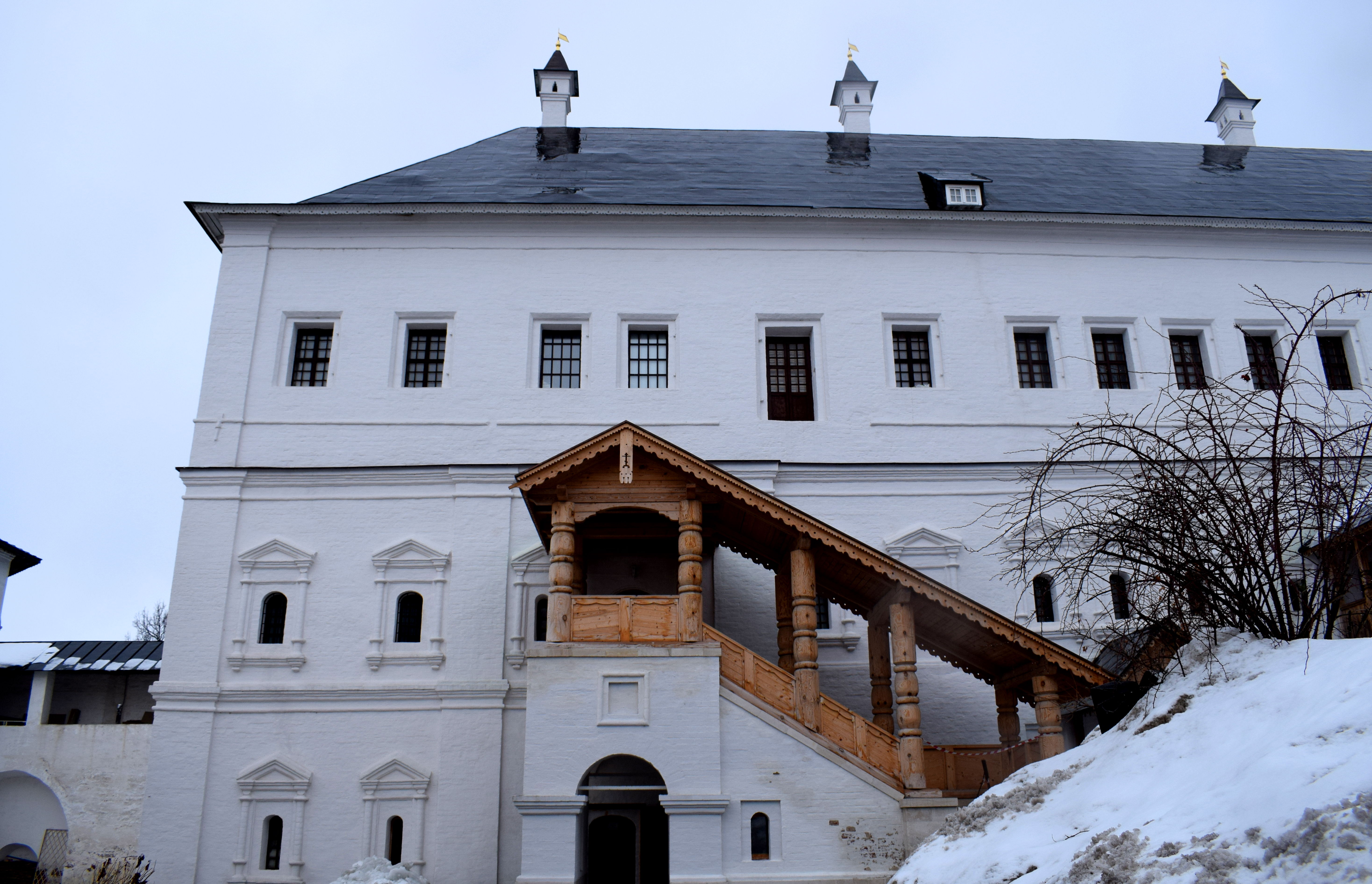
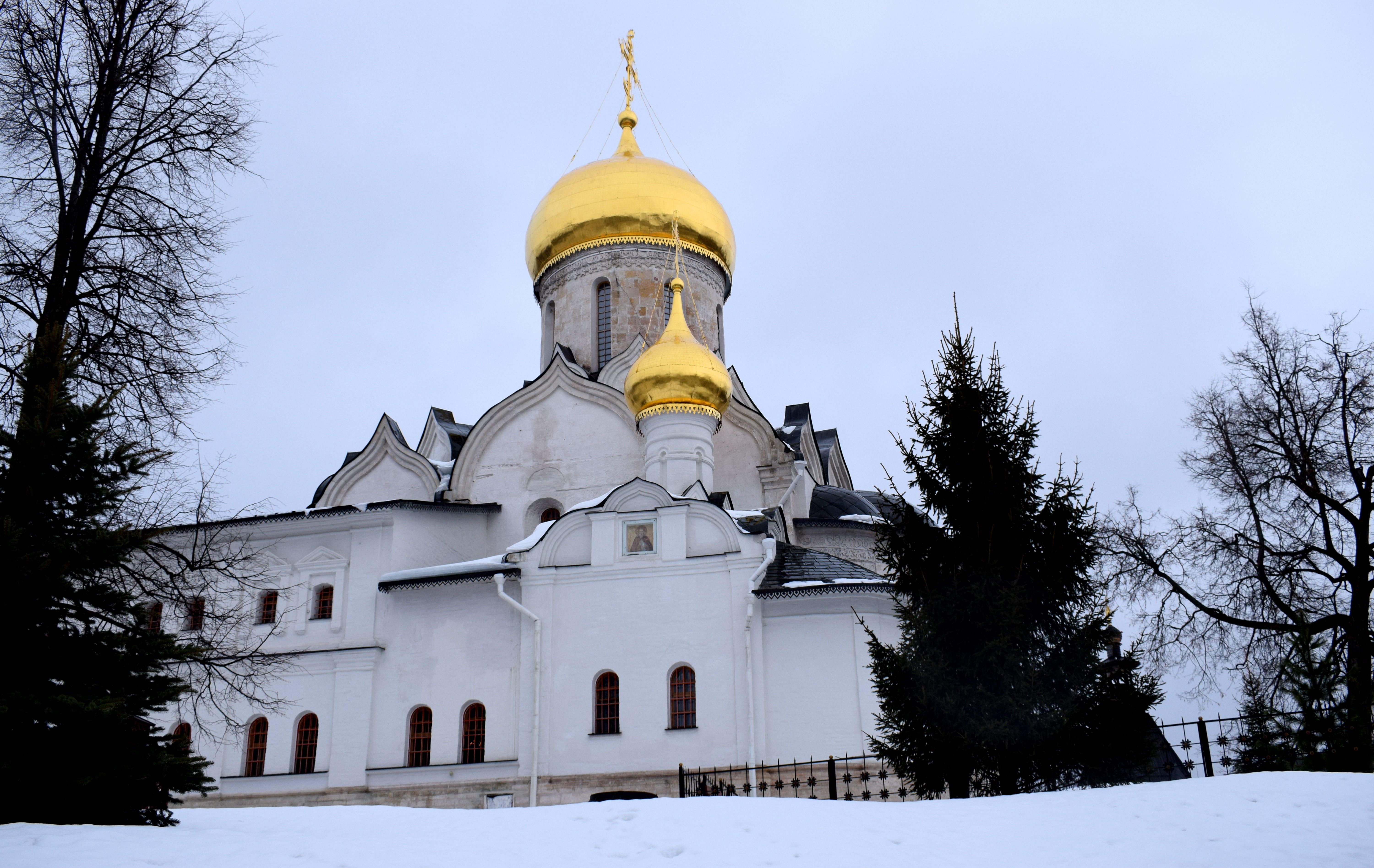 A group of three 17th century churches originally built to be the chamber for the Tsar Alexis’ wife. The clock tower in the upper left is the tallest building in the monastery.
A group of three 17th century churches originally built to be the chamber for the Tsar Alexis’ wife. The clock tower in the upper left is the tallest building in the monastery.
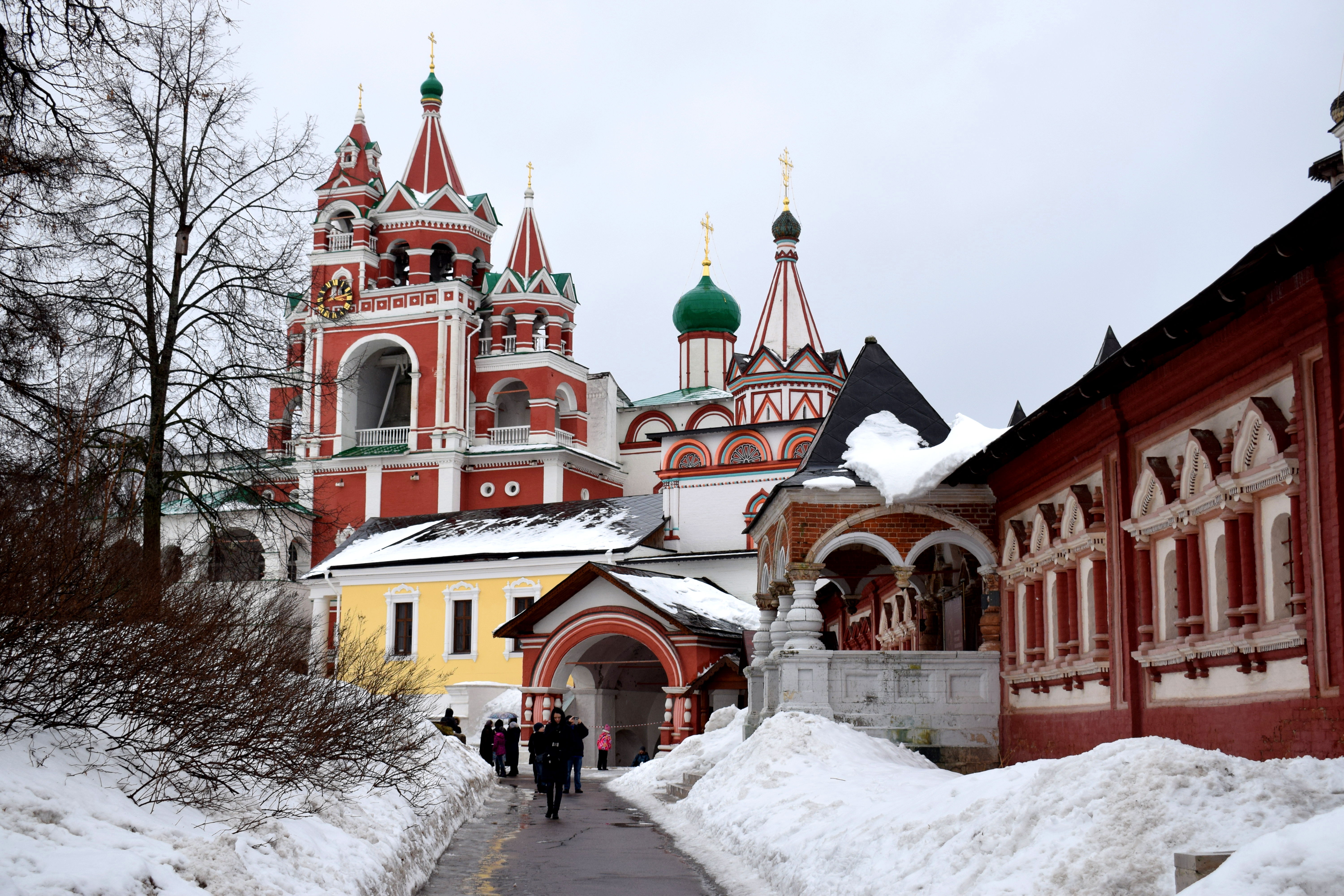
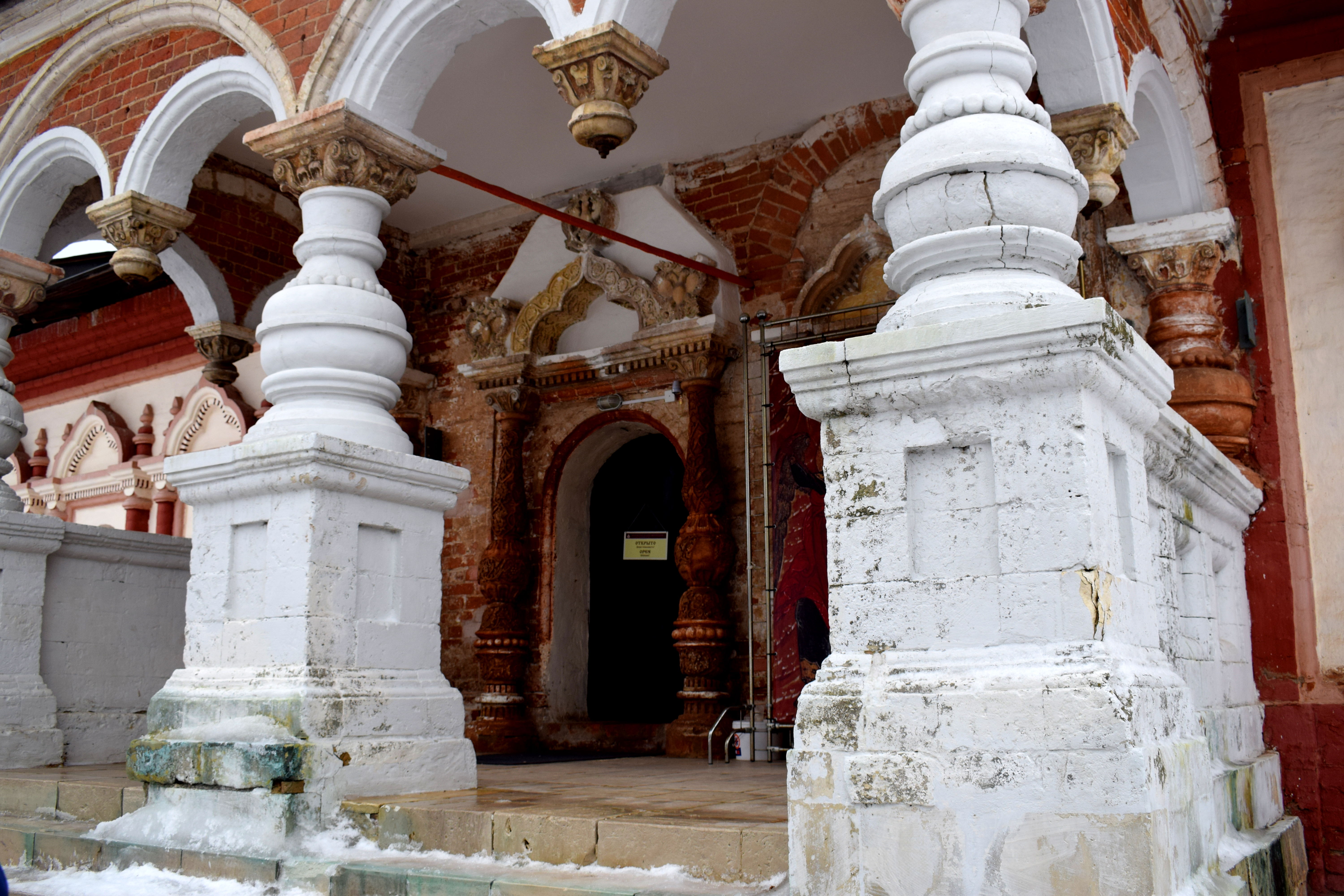
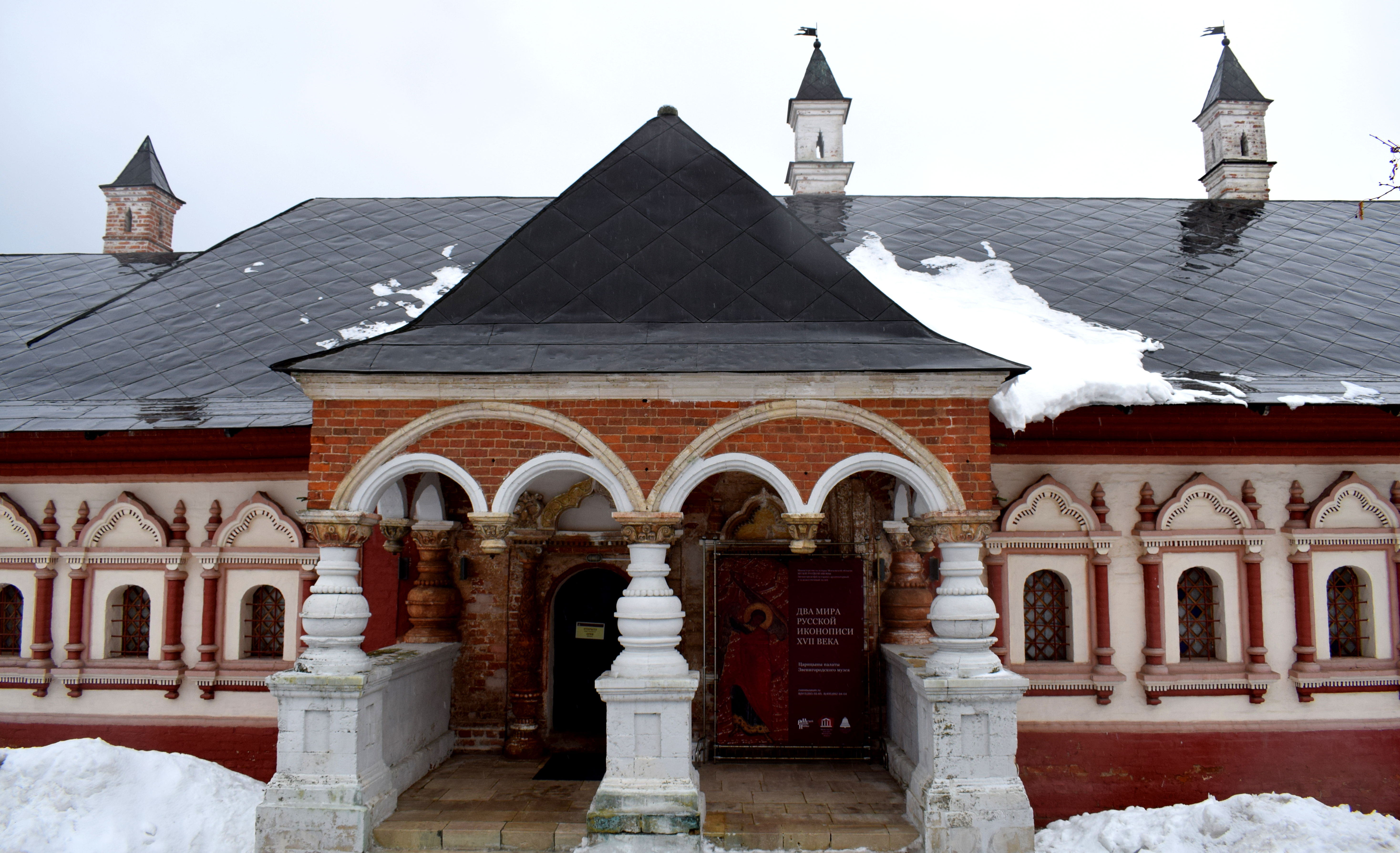 A beautiful doorway into the orthodox cathedral.
A beautiful doorway into the orthodox cathedral.
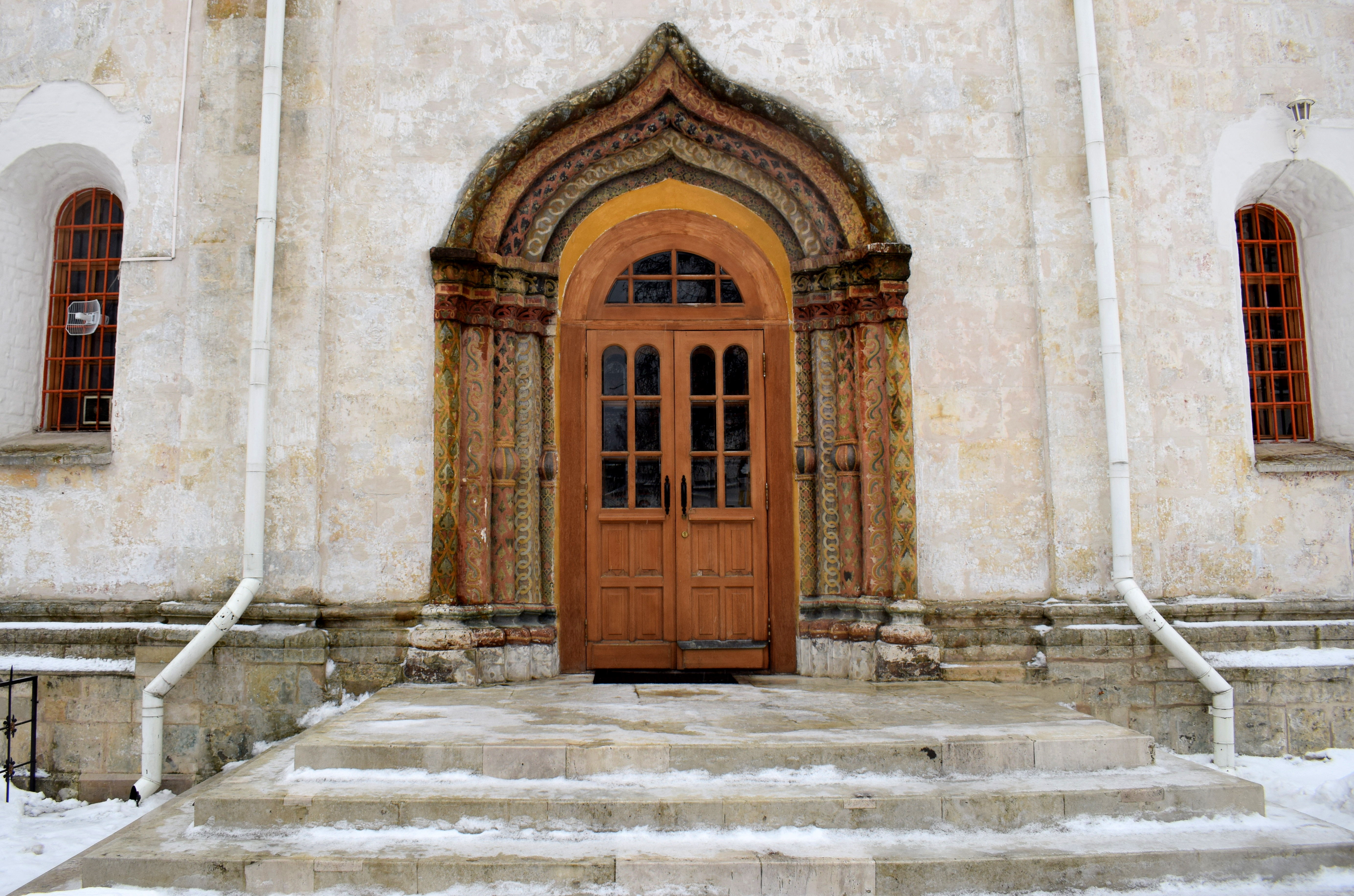
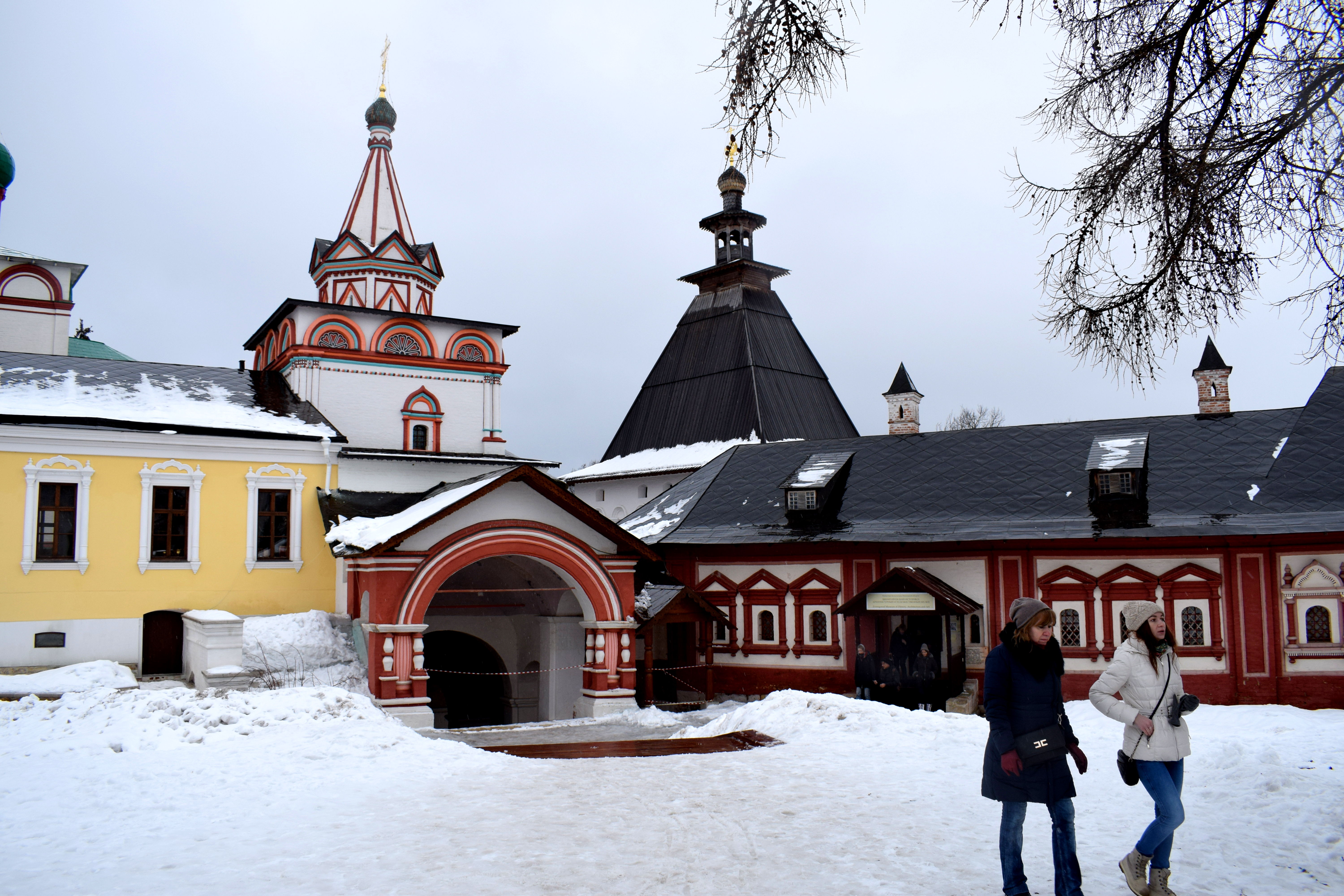
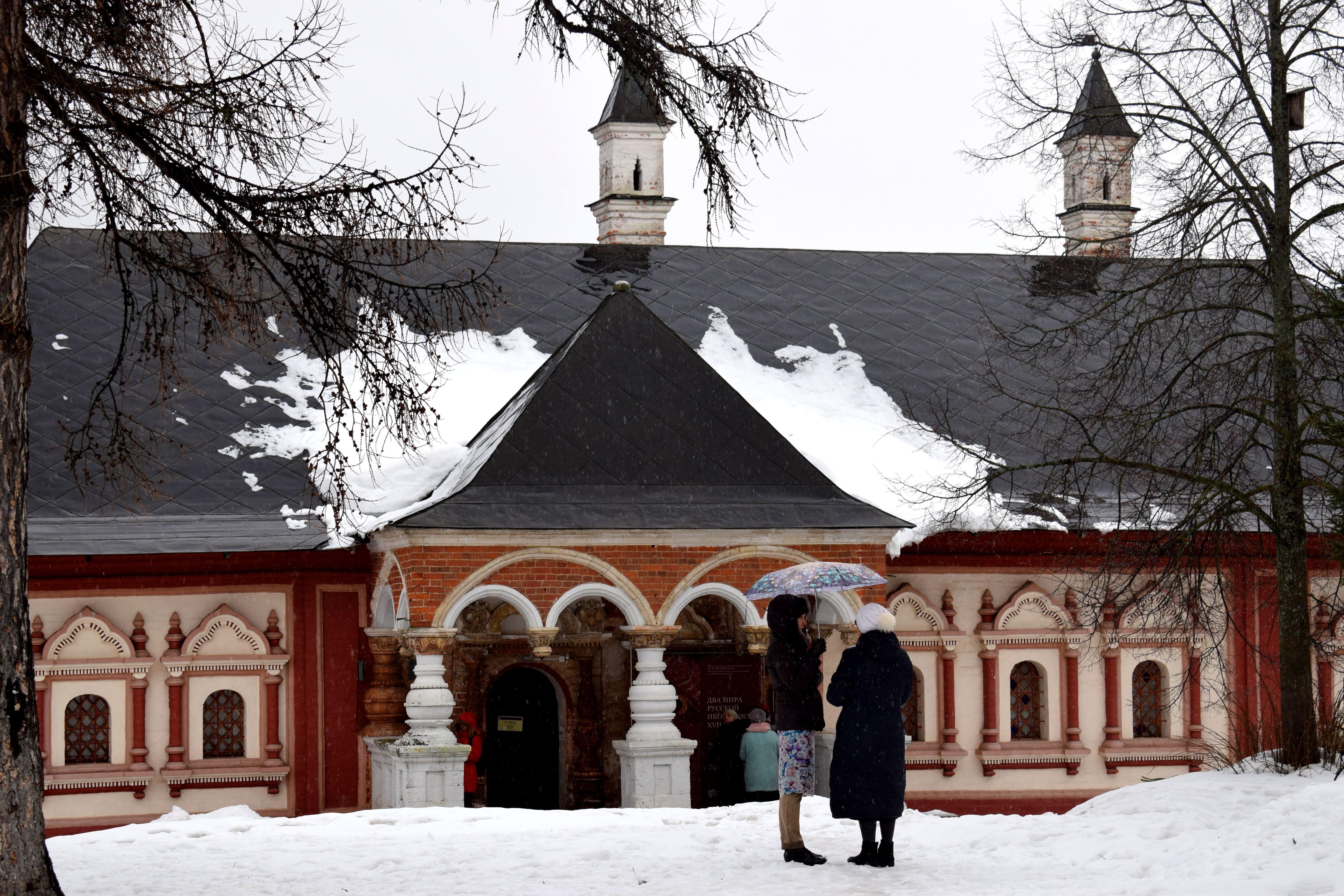 Back in the city center of Zvenigorod.
Back in the city center of Zvenigorod.
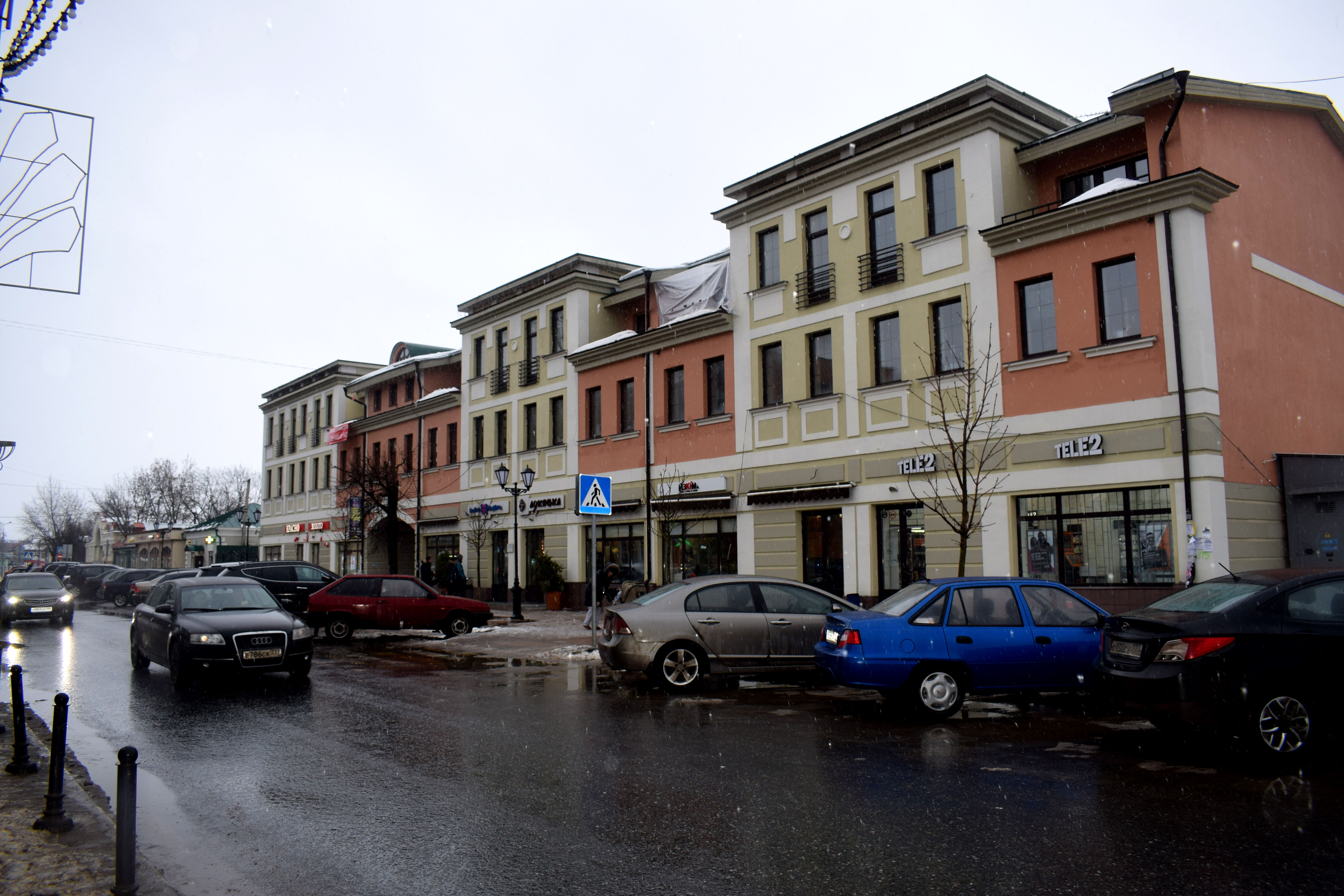 Overall, the monastery is a perfect day trip from Moscow and offers a unique chance to explore the ancient churches located within its walls and warm up inside with tea and deserts known to be some of the best in the region. While we did not have time to explore the town of Zvenigorod itself, there are also several things to see and do there, not the least of which is to visit Anton Chekhov’s old house where the famous Russian writer lived after graduating university in Moscow. Even though the best time to visit Zvenigorod is in the summer and fall, for those that can brave the elements, a visit in the winter is no less rewarding.
Overall, the monastery is a perfect day trip from Moscow and offers a unique chance to explore the ancient churches located within its walls and warm up inside with tea and deserts known to be some of the best in the region. While we did not have time to explore the town of Zvenigorod itself, there are also several things to see and do there, not the least of which is to visit Anton Chekhov’s old house where the famous Russian writer lived after graduating university in Moscow. Even though the best time to visit Zvenigorod is in the summer and fall, for those that can brave the elements, a visit in the winter is no less rewarding.
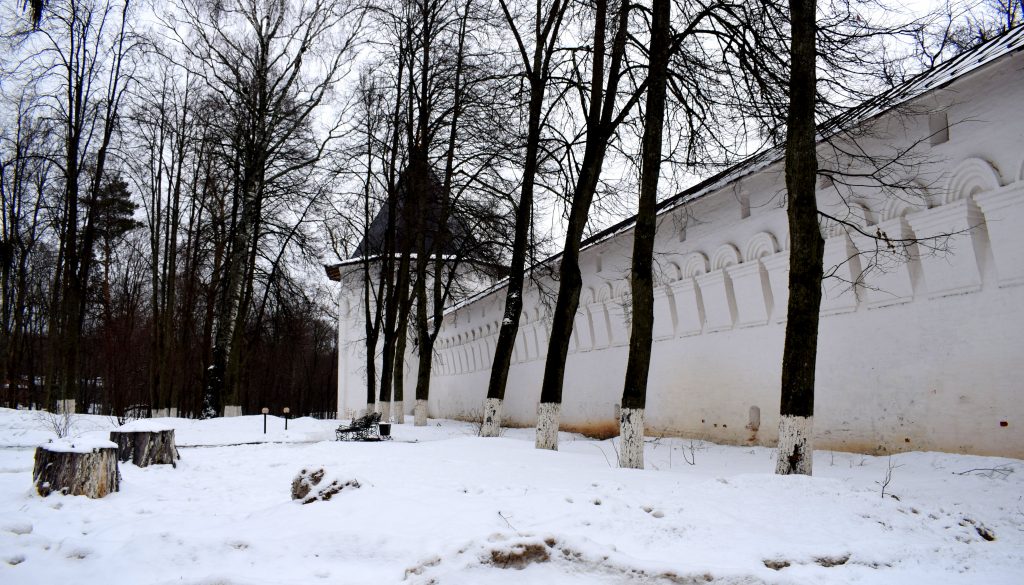
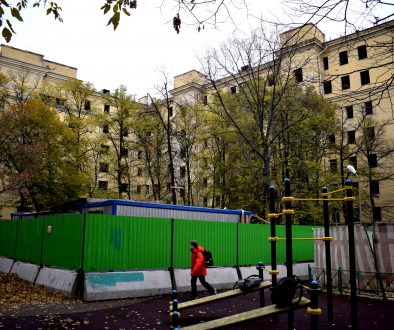
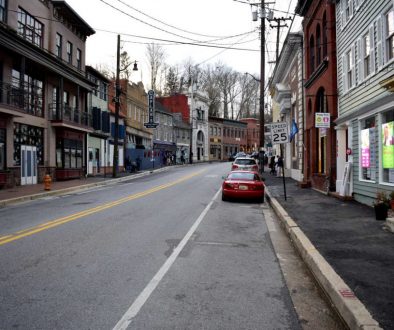
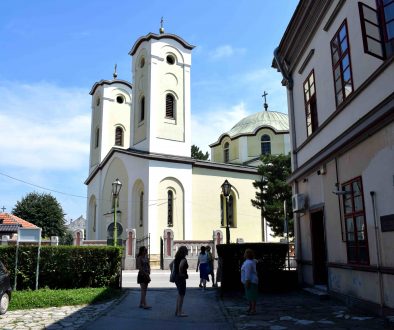
March 11, 2018 @ 4:29 pm
Great pics and historical context! Keep the posts coming.